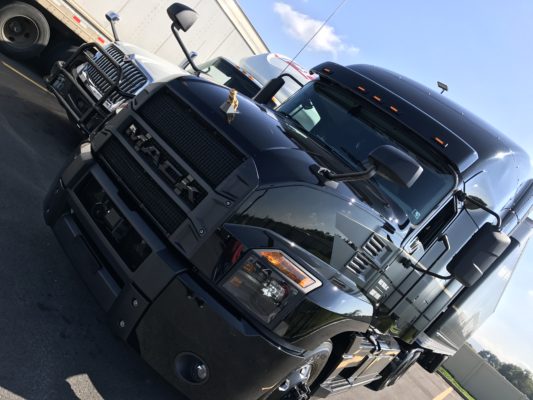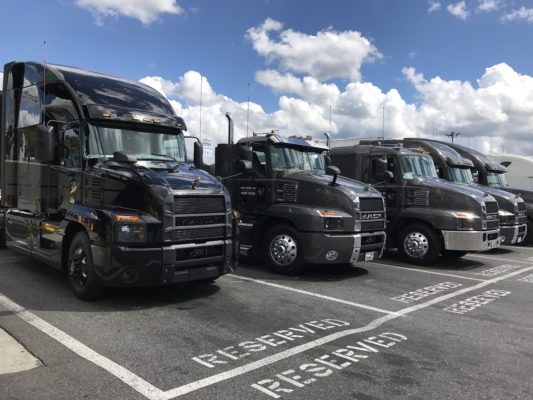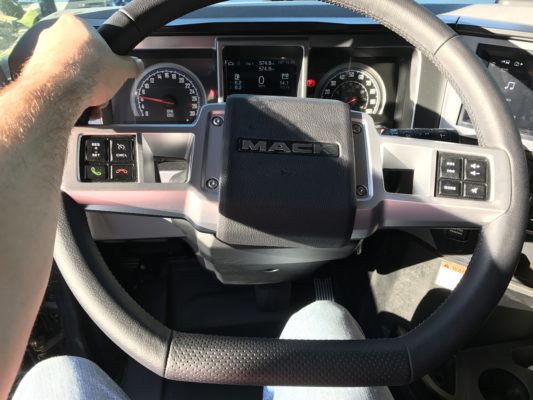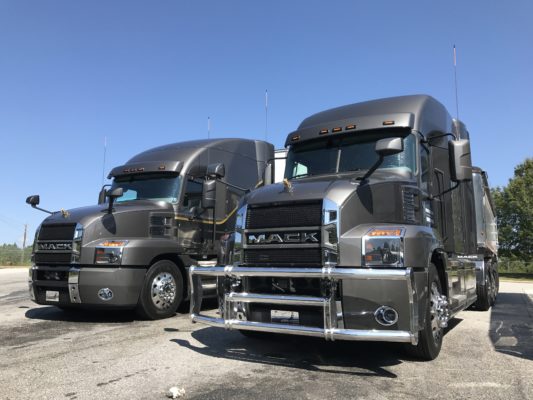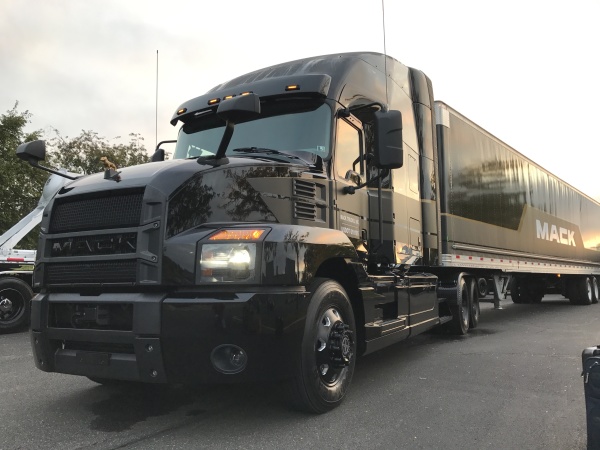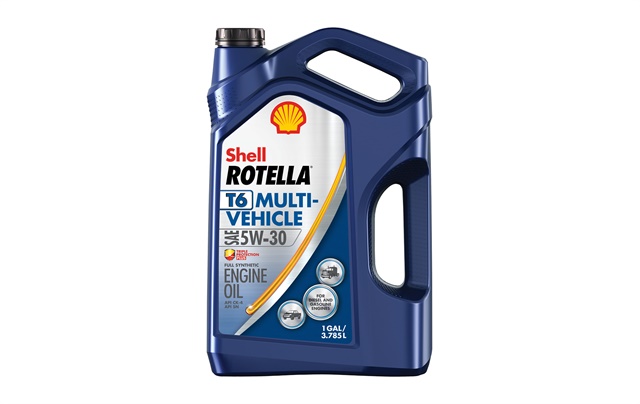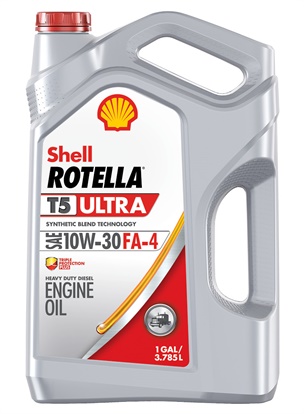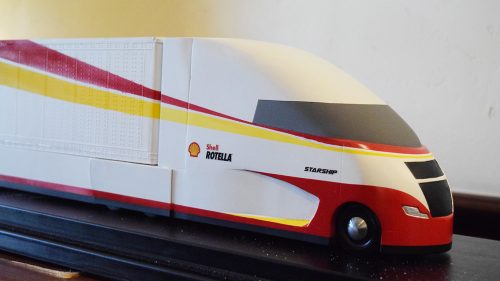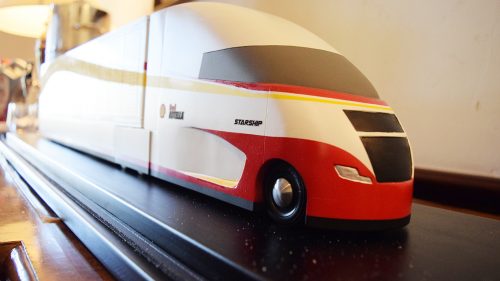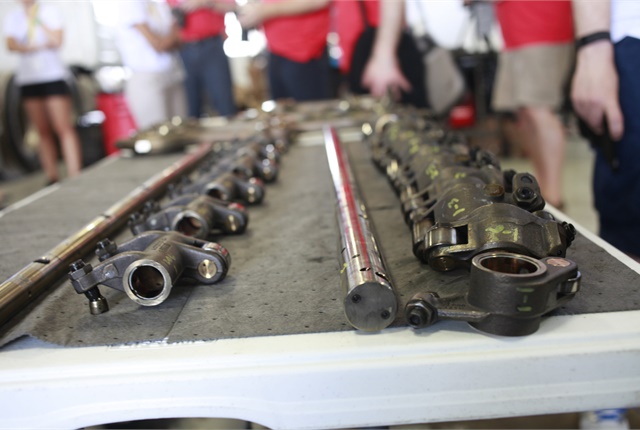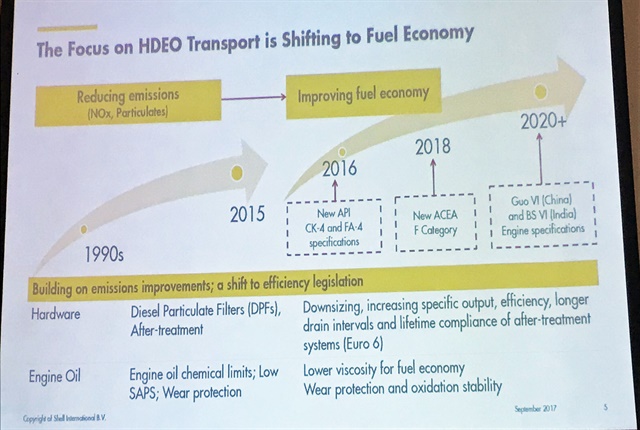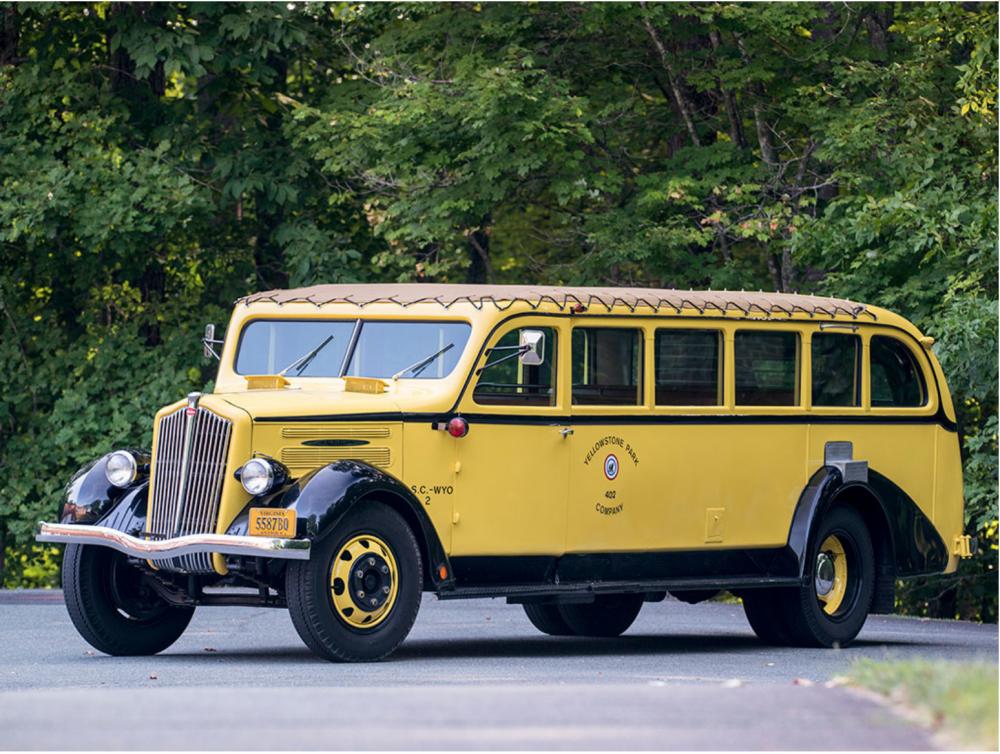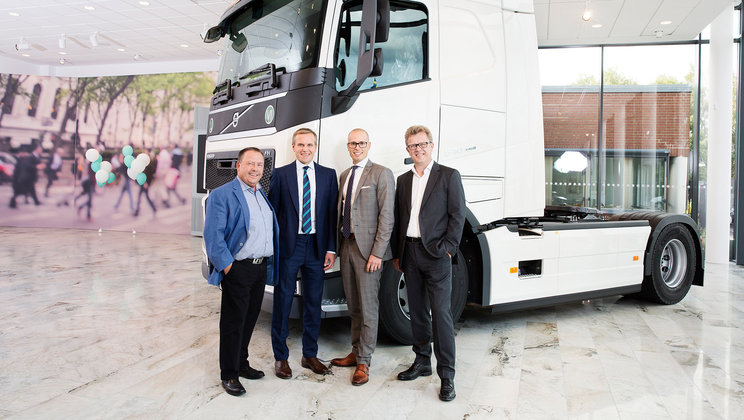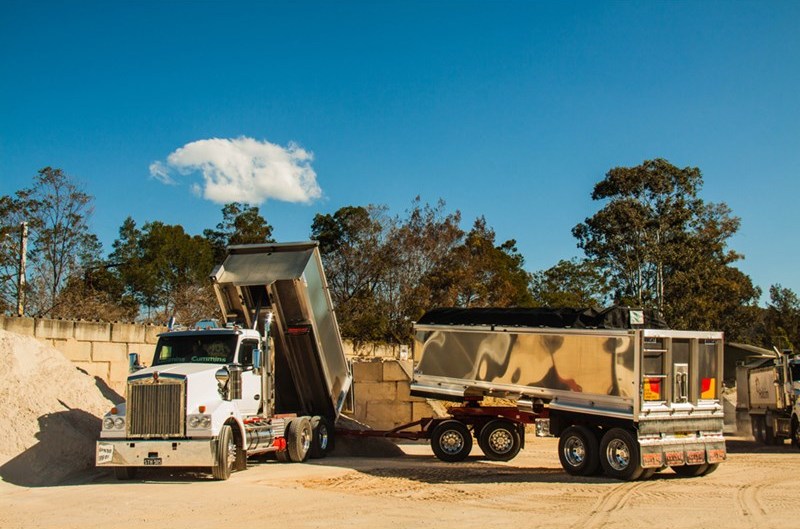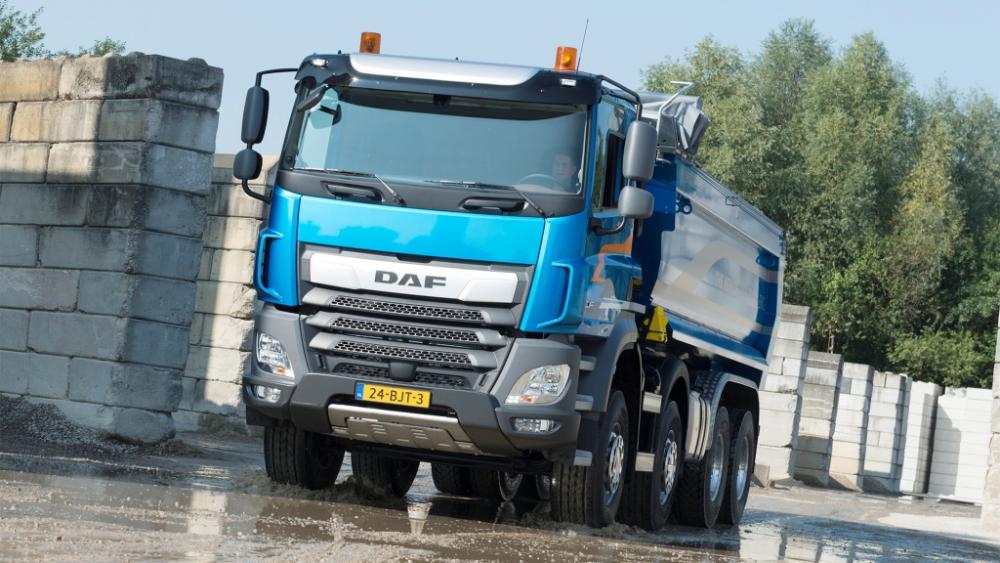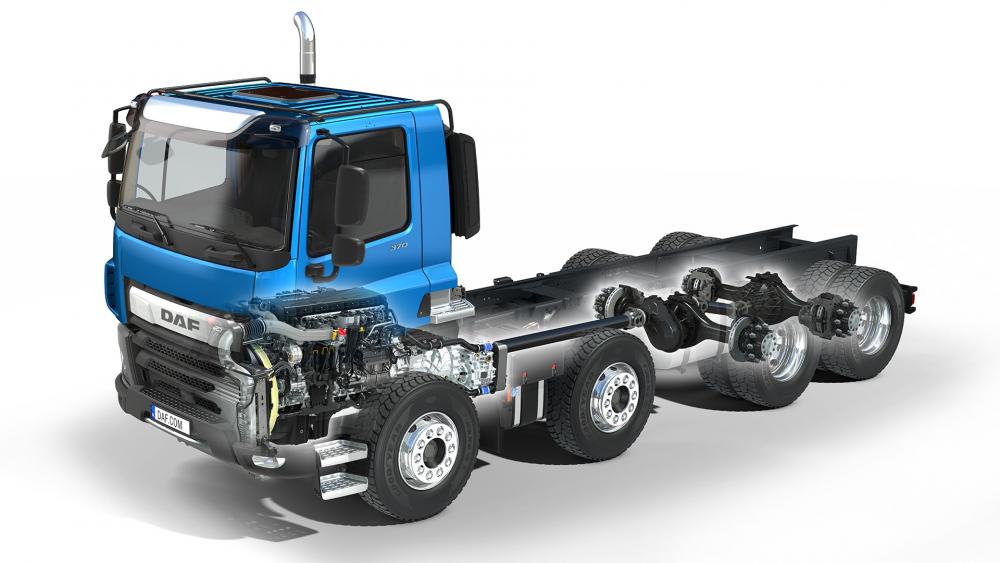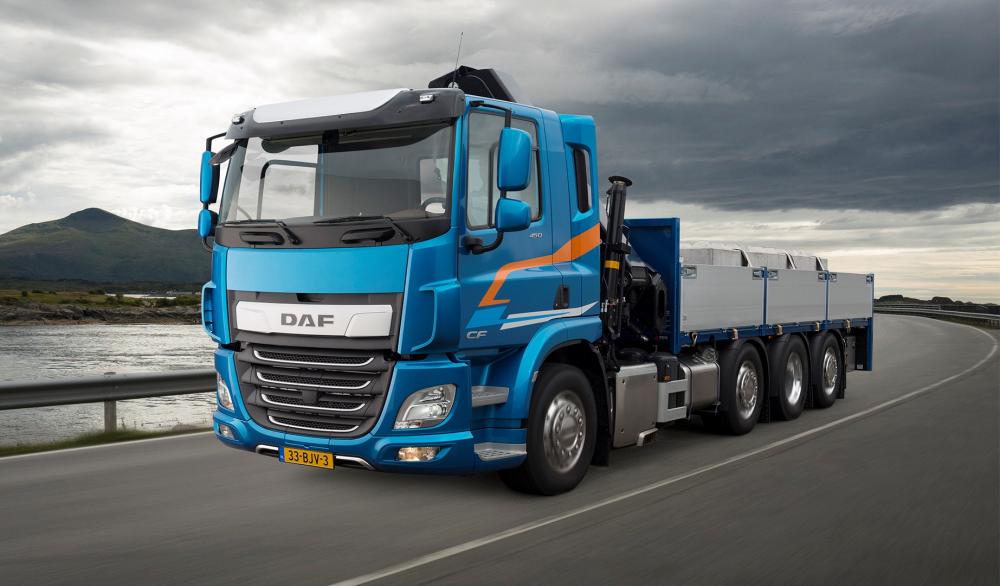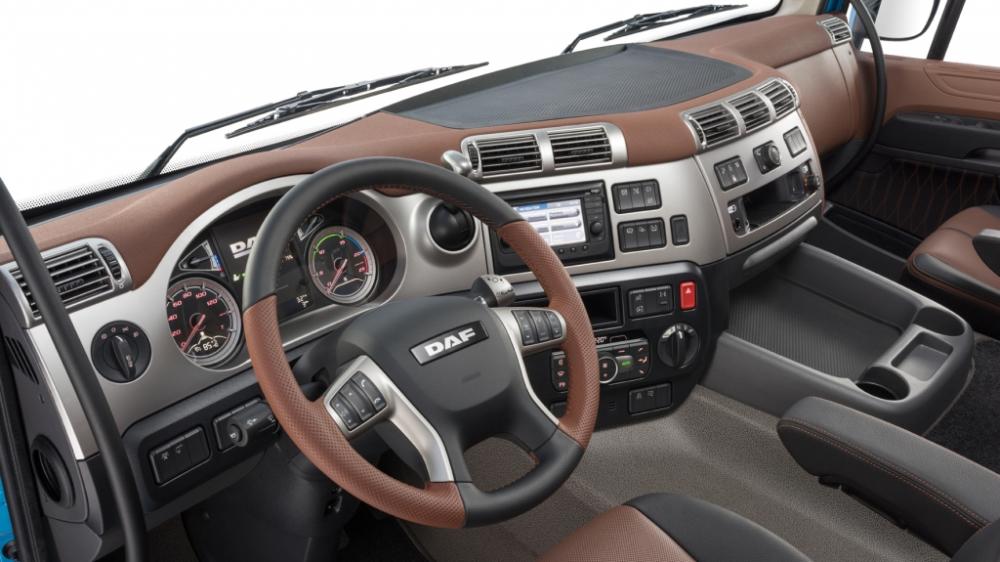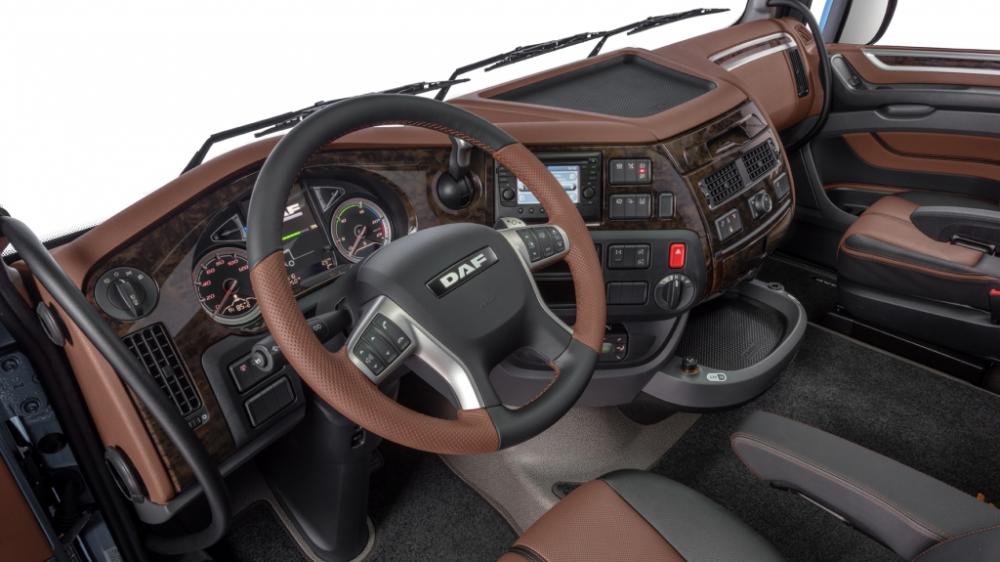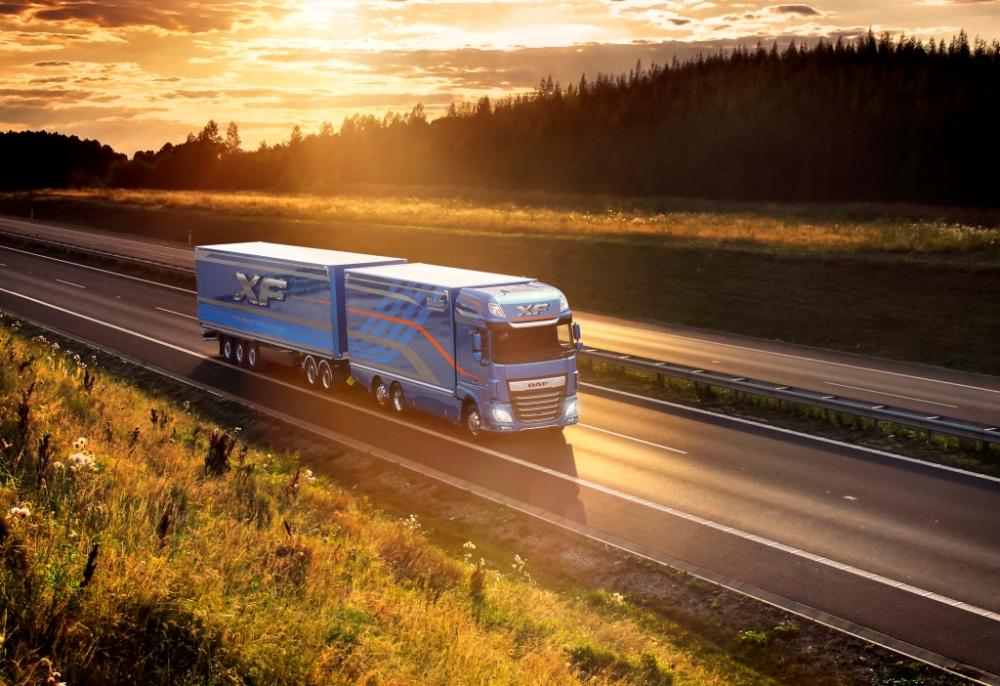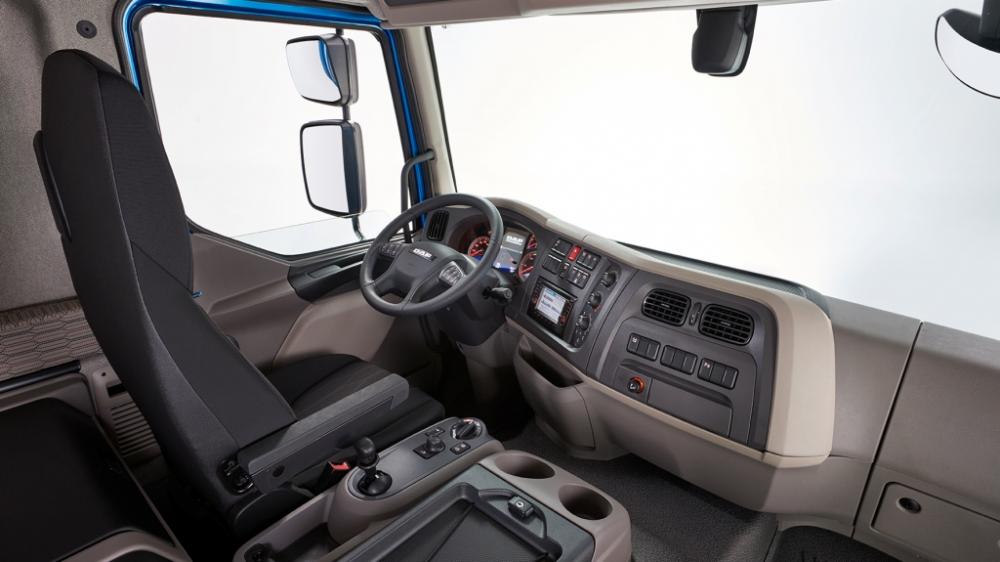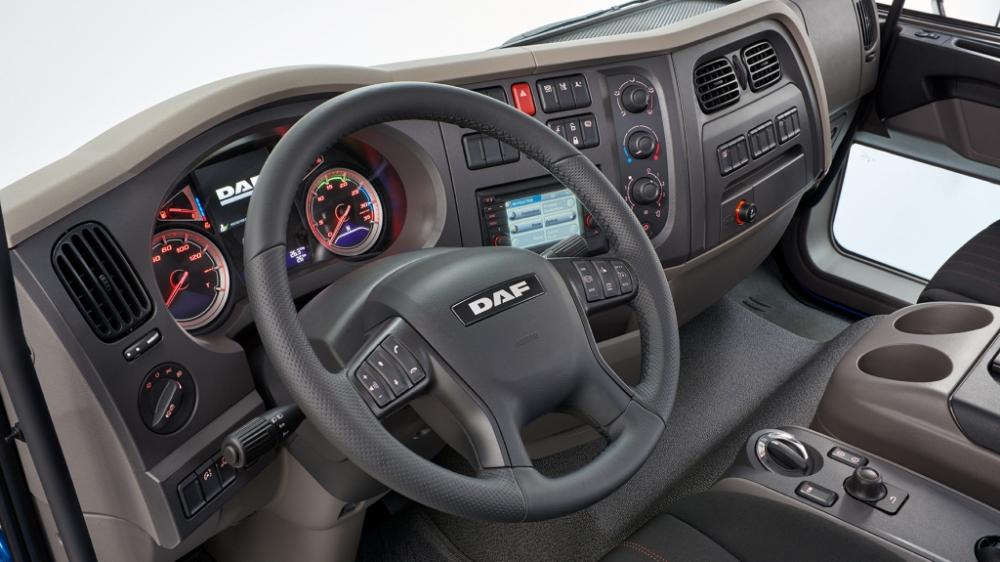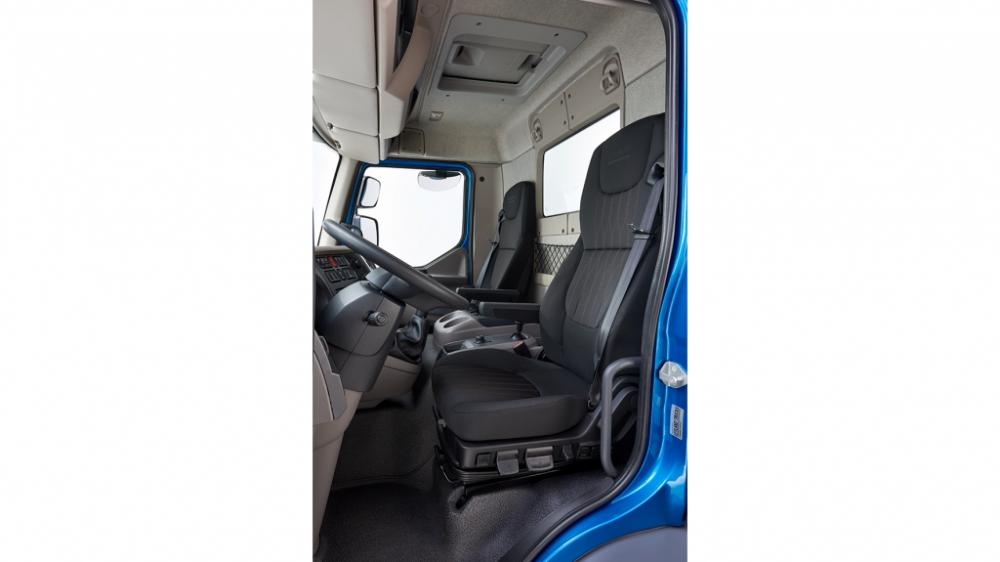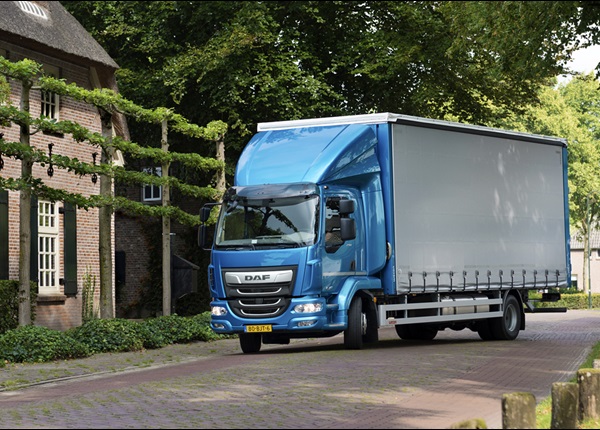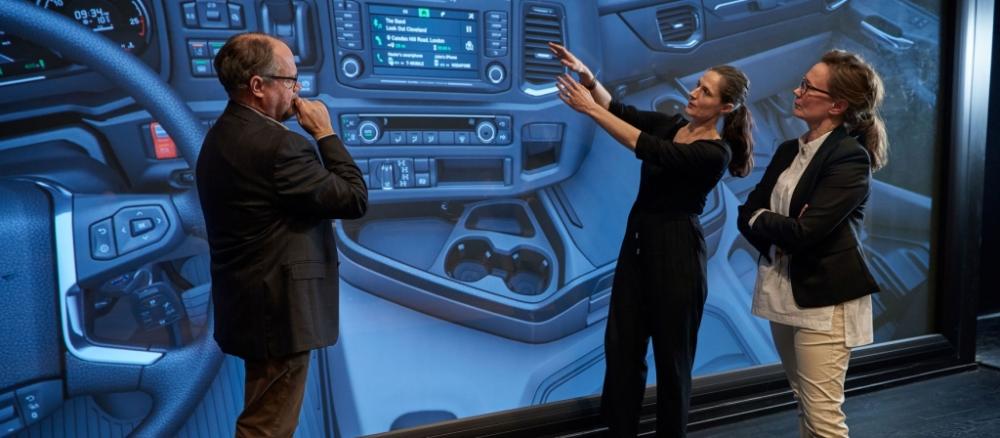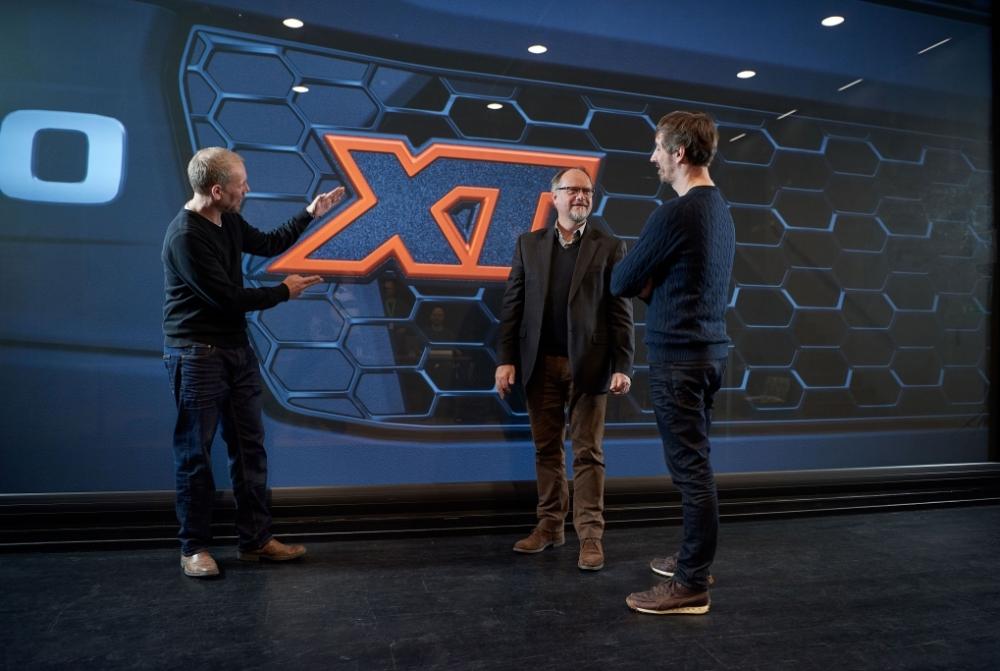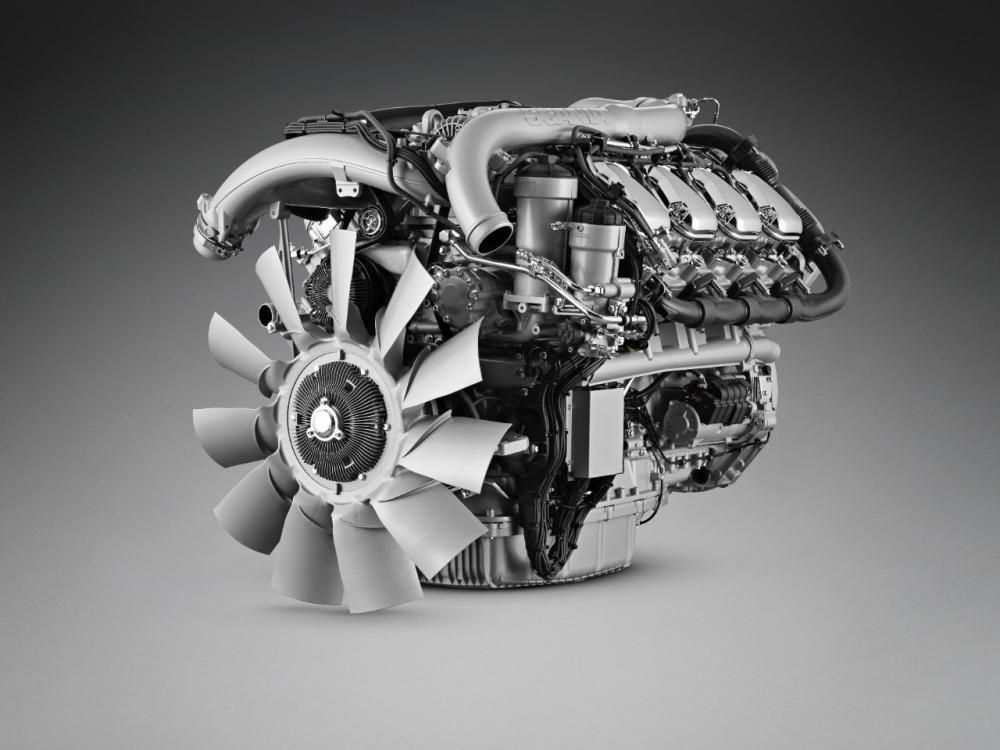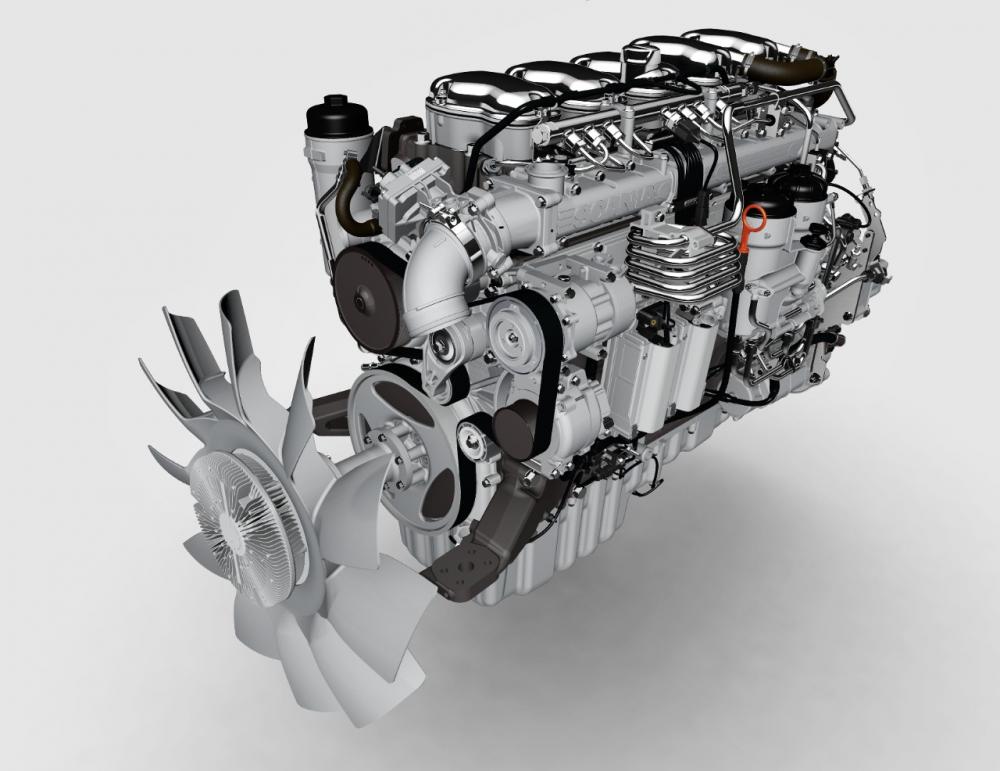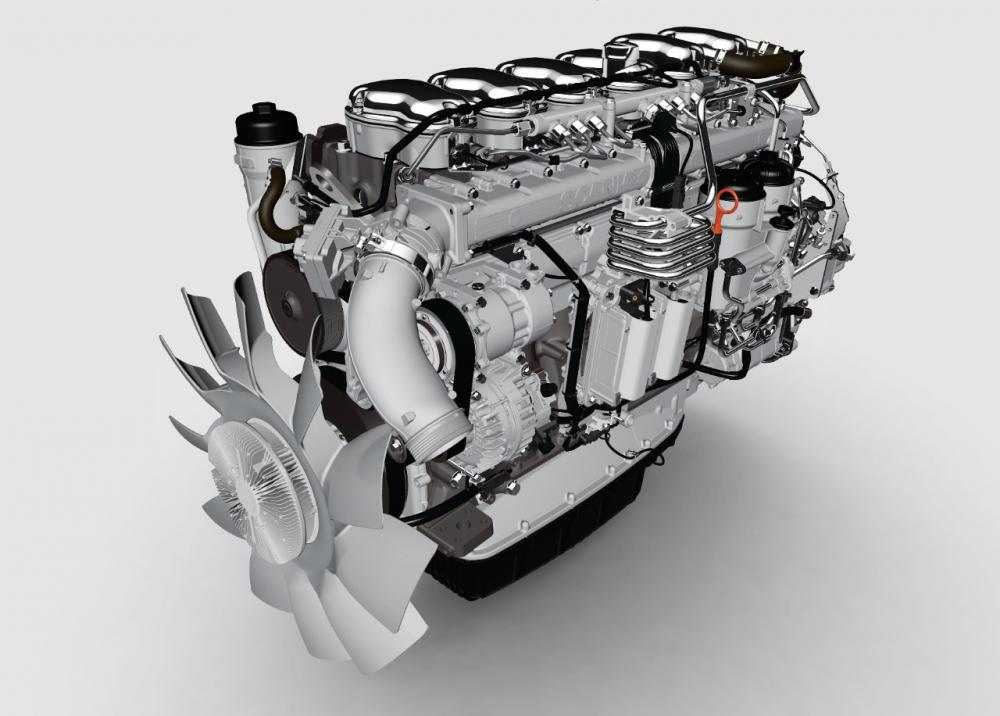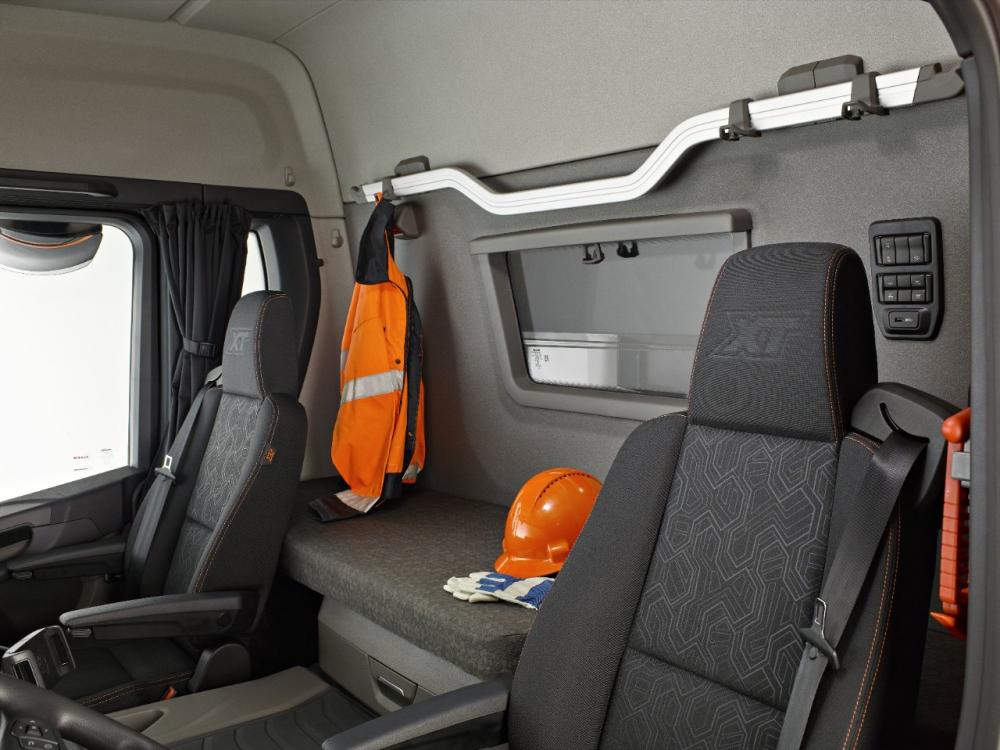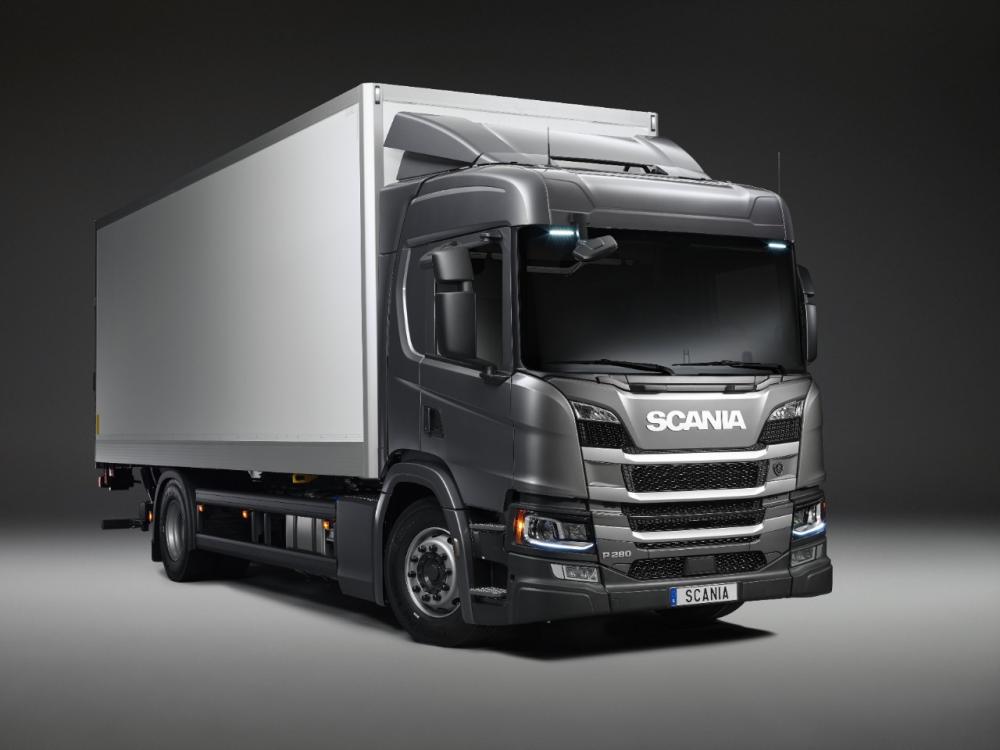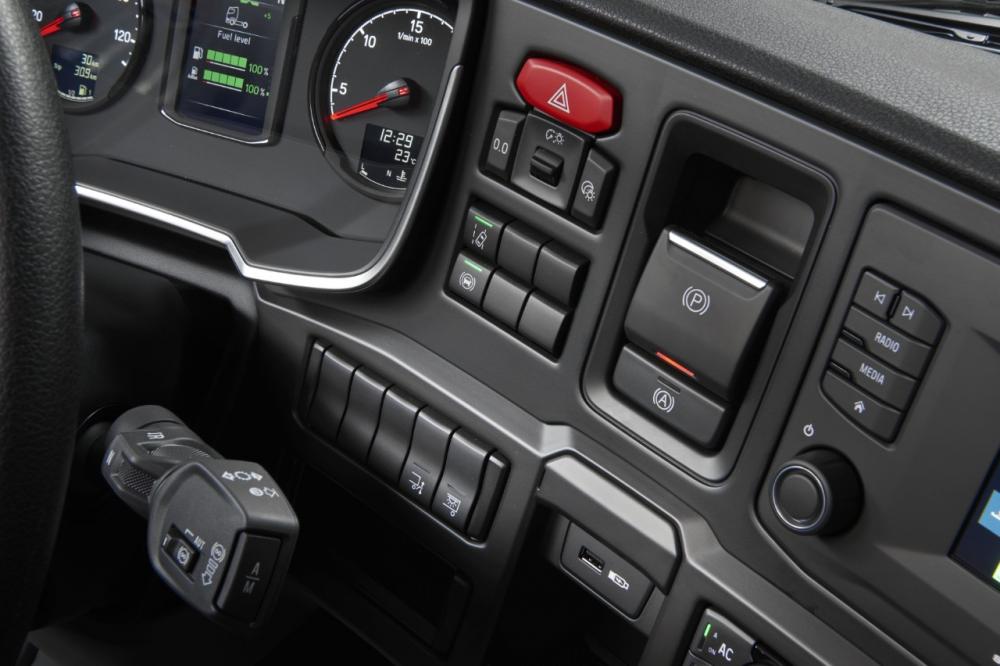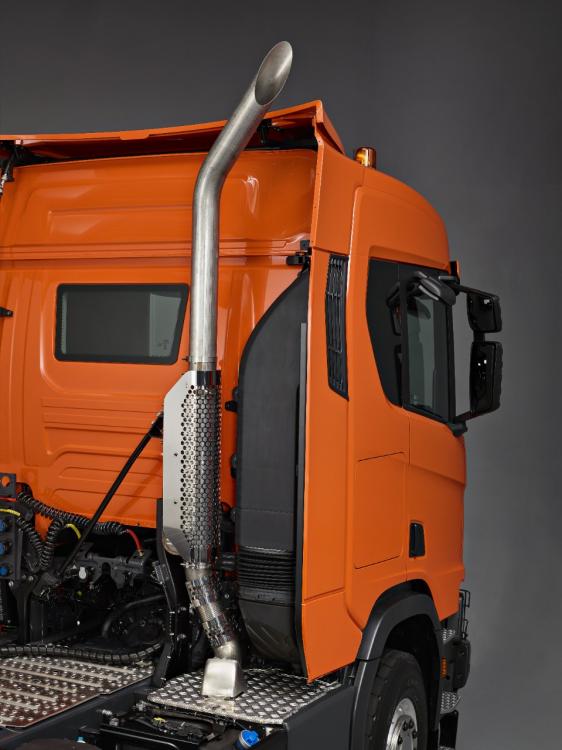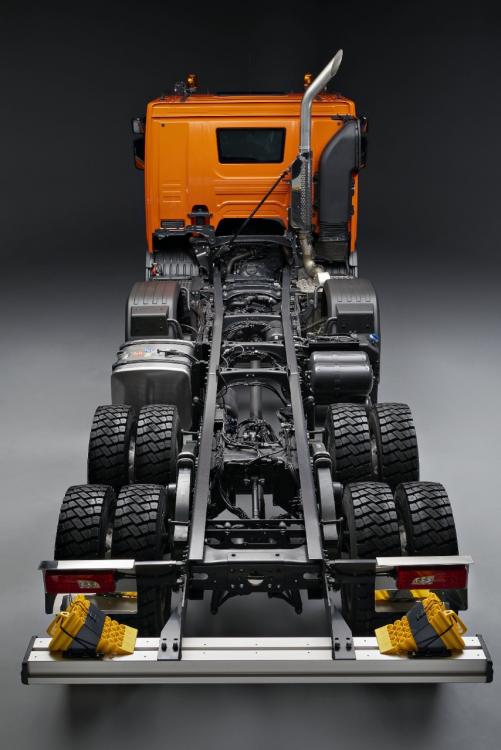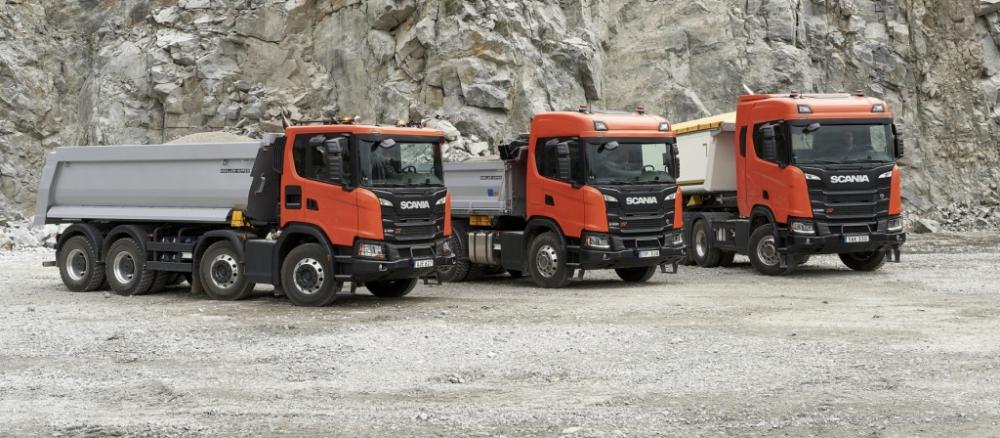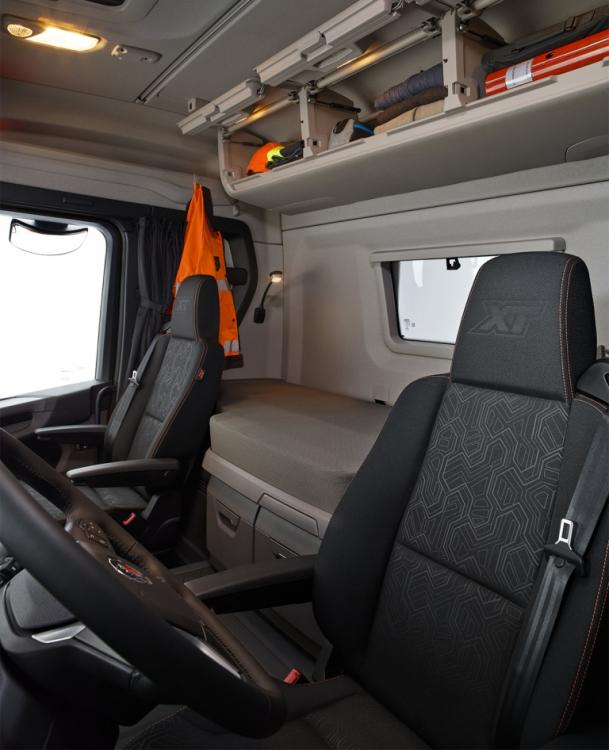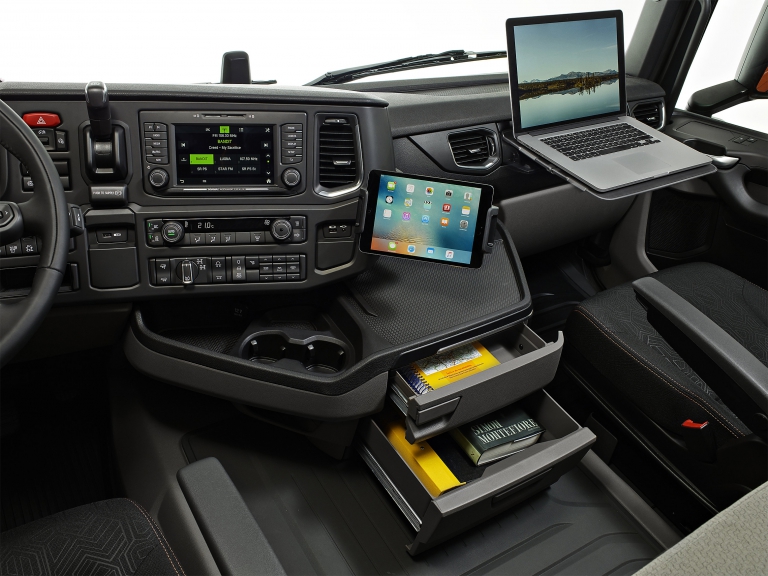
kscarbel2
Moderator-
Posts
18,895 -
Joined
-
Days Won
114
Content Type
Profiles
Forums
Gallery
Events
Blogs
BMT Wiki
Collections
Store
Everything posted by kscarbel2
-
Volvo introduces new Mack “Anthem” on-highway tractor
kscarbel2 replied to kscarbel2's topic in Trucking News
Driving the new Mack Anthem James Menzies, Truck News / September 20, 2017 DULUTH, Ga. – The Black Dog led a convoy of 10 Mack trucks on an 850-mile journey through seven states after the launch of the new Mack Anthem highway tractor in mid-September. After a glitzy launch event in Allentown, Pa., Sept. 13-14, the trucks had to make their way to the North American Commercial Vehicle (NACV) show in Atlanta, Ga., where they’ll make their public debut. CDL-holding editors were allowed to participate in the convoy, driving a number of Mack Anthems of various configurations, as well as a Granite and Pinnacle sporting the new interiors. This was a unique opportunity, and one that I enjoyed from start to finish. We had a lot of fun along the way, but the real treat was getting some meaningful time behind the wheel of the all-new Mack Anthem. The Anthem looks like nothing else on the highway, and its bold design commanded a lot of attention along our route. Every time we pulled into a truck stop, the trucks attracted a crowd – especially the Black Dog, an all-black Anthem with decked out interior that was in my mind the star of the show and deserving of the lead position. Drivers climbed around and inside the trucks when we were parked, and during a “truck stop takeover” at the Love’s travel plaza in Raphine, Va., Mack reps handed out free t-shirts and hats. There are undoubtedly more Mack Trucks fans today than when we started our trip. The high interest in the new-look truck was obvious, among truck drivers and even the motoring public. We turned our share of heads on the highway, and that’s a pretty good feeling when cruising down the road in a rig that truckers and even four-wheelers deem worthy of a thumbs-up. The Anthem seems poised for success because it boasts a throwback design, while also improving fuel economy by up to 3% compared to the Mack Pinnacle with sleeper cab. Who says efficiency and bold traditional styling can’t co-exist? From the oversized, boxy headlights, to the squared fenders and robust grille, this is a trucker’s truck. And it’s been built around a Mack powertrain that performs beautifully; the mDrive automated transmission and the MP-series engines have been dialed in to work in harmony. The mDrive shifts precisely when needed and the MP8 provides ample power to pull some significant grades at typical gross vehicle weights. The engine brake was quiet, yet effective, able to hold the truck back even down the long, intimidating Fancy Gap grade averaging 4.5% over six miles. I only tapped the brakes twice on the descent and never felt out of control. Here’s something you won’t see: a Mack with mDrive using one of those runaway truck lanes. I spent most of my time driving two Mack Anthems with 70-inch sleepers, powered by MP8 engines spec’d with 505 hp and 1,860 lb.-ft. of torque. Both had the 12-speed mDrive overdrive automated transmission – a great combination capable of handling most on-highway applications, payloads, and routes you’ll encounter. Both Anthems I drove were also equipped with Bendix Wingman Fusion, and I spent most of my driving time using the adaptive cruise control. This adjusted the truck’s speed to account for nearby traffic, maintaining a safe following distance but only intervening with engine and foundation brake applications when absolutely necessary. Some of the brake inputs were a little harsh, but it did the job. I was impressed that when the truck was okay to resume its cruise speed, it did so in an controlled, efficient manner, and didn’t charge back up to the set cruise speed with a complete disregard for fuel economy. It was a nice way to drive. I appreciated the mDrive when we were in stop-and-go traffic due to construction; a tap of the throttle will prompt the truck to putter along at a slow, steady speed. The 13-liter Mack MP8 was sufficiently powered to pass other trucks on uphill climbs and we were loaded to more than 60,000 lbs. At no time did I feel more power was needed. I did use the kickdown feature a few times for an extra boost of horsepower, which was handy when completing a pass. Drivers who were drawn to the truck by its new exterior, were equally amazed when they poked their heads inside, and for good reason. The interior has also been completely revamped. The steering wheel has a racecar-inspired flat bottom. This is a unique attribute that’s also functional, as it provides a little extra belly room and makes it easier to climb inside the truck or into the sleeper. I like the look of the flat bottom steering wheel and it didn’t interfere with my preferred hand positions at any time or while backing. The steering wheel has been kept relatively simple, with minimal buttons placed on it. The cruise control and radio can be adjusted on the steering wheel, but it’s not overwhelming. The gauges have been repositioned and are much more stylish. The rocker switch icons are etched in to prevent fading, and the entire dash lights up beautifully after dark. All interior and exterior lighting is LED, which provides better illumination while drawing less power. Mack has modernized the instrument cluster while maintaining a truck look and feel. It’s not as car-like as other recently introduced interiors, and I suspect that’ll appeal to many truck drivers. But touch points have been enhanced and the dash and instrument panel are of better quality than those previously found in the Pinnacle. The new interior has been given to the Mack Granite and Mack Pinnacle axle-forward models as well. The Anthem replaced the Pinnacle axle-back model, and will be its top seller, but the axle-forward Pinnacle will be retained and rechristened, simply, the Pinnacle. Pinnacle and Granite customers will appreciate the new interior, which completely revitalizes those models. I spent one leg of the trip driving the Granite, and the new interior makes this workhorse a nicer truck to drive. I can also attest to the quality of the new sound system – who can resist a little AC/DC while cruising down the open road? Mack loaded the Anthem interior with storage. They claim to offer an industry-leading 27 cubic feet, and I wouldn’t dispute their calculation based on an exploratory inspection of the sleeper. They put storage bins and compartments everywhere possible. The redesigned seats are comfortable and easy to position. The door must be closed by the handle, which struck me as odd, but it felt durable. The sightlines are much improved, thanks to a hood that slopes down, and both one- and two-piece windshields are available. The hood-mounted mirrors are perched atop the hood, which makes them look like space alien antennae, but this was done for a reason. They’re aligned with the side mirrors to improve airflow, and they do provide exceptional visibility alongside the truck and trailer. I spent one leg of the trip sprawled out in the sleeper. It takes little effort to get comfy back there and I suspect the Anthem would make an excellent team truck. The sleeper curtain is now attached by magnet rather than Velcro, so a driver who needs to access the bunk while his or her partner is sleeping can do so quietly without tearing back a Velcro curtain. The new stand-up sleeper provides plenty of head room and the radio and temperature controls are well placed for easy access while lying down. The Anthem can be spec’d with single or double bunks. Numerous sleeper configurations are available. Day one of our road trip saw us travel from Allentown, Pa., to Greensboro, N.C. It took about 12.5 hours with stops and gave me a real appreciation for what professional drivers do on a daily basis. Next morning, we were right back at it for the 300-mile run down to Nextran Truck Centers in Duluth, Ga., where the trucks would be put on display for a few days, staged, and then transported to the NACV show in downtown Atlanta. It was exhilarating to pull into the Nextran parking lot, all 10 trucks in formation, air horns blasting, as dealer reps shot video and took photos. The new Mack Anthem is a sharp looking truck, loaded with storage, with a more modern, higher-end interior. The powertrain is dialed in and a pleasure to operate. The truck’s also efficient. What could make it better? Maybe a Canadian edition with our flag displayed on the Anthem badge, and a Maple Leaf tastefully stitched somewhere inside the cab. After all, national pride isn’t just an American thing; a Canadian Anthem would be a beautiful thing. . -
Volkswagen launches all-new Delivery light truck range
kscarbel2 replied to kscarbel2's topic in Trucking News
The 6x2 has been extremely popular with the beverage industry, where, as in the US, they begin the day essentially overloaded. https://www.man-la.com/produtos-volkswagen/modelo/delivery-8/13-160-121 -
Shell touts progress with new oils, expands Rotella line
kscarbel2 replied to kscarbel2's topic in Trucking News
New engine oils, now recommended by all OEMs, show extended drain intervals, better fuel economy James Jaillet, Commercial Carrier Journal (CCJ) / September 20, 2017 he trucking industry’s transition to a new generation of engine oils, which began last December, has gone smoothly, say top engineers for Shell Rotella. All major North American engine makers are recommending use of the new lubricants, dubbed CK-4 and FA-4 oils, for their equipment, says Dan Arcy, OEM Technical Manager for Shell Rotella. The oils have also prompted all North American engine makers to extend recommended drain intervals. What’s more, all but two heavy-duty diesel engine makers are recommending for current-model engines the use of FA-4 oils, the so-called low-viscosity oils that are intended for use in modern engines to boost fuel economy and cut emissions of greenhouse gases. Arcy, along with Shell’s head of field testing Matt Urbanak, offered an update on the implementation of the new CK-4 and FA-4 oils in a press event held in Santa Barbara, Calif., on Sept. 20. Paccar, maker of Paccar MX engines and owner of Peterbilt and Kenworth, is not yet recommending FA-4 oils in their current model-year engines, Arcy says. Likewise, Mack and Volvo are not recommending use of FA-4 either. However, Paccar, Volvo and Mack are all recommending use of CK-4 oils for their current model-year equipment, Arcy says. Cummins recommends use of FA-4 oils in 2017-model X15 engines and newer. Navistar also recommends use of FA-4 oils for its new A26 engine and uses FA-4 oils as the factory fill lubricant. Detroit not only recommends use of FA-4 oils in its current-model heavy-duty engines, but for model-year 2010 and later engines. The new generation of engine oils had been in development for five years before licensing and deployment began in December 2016. The two new oil categories replaced the former CJ-4 category, which had been in use for nearly 10 years. Engine makers requested the new category in 2011, spurring the American Petroleum Institute, along with oil marketers, truck manufacturers and chemical companies, to develop standards and testing protocol for the new oils. Manufacturers sought the new lubricants as a means to extend drain intervals, improve fuel economy and reduce diesel engine emissions. The result, CK-4 and FA-4 lubricants, improve oil oxidation stability, boost shear stability and reduce oil aeration, Arcy says. These changes help engine oils last longer and better protect equipment. CK-4 oils have spurred longer drain intervals, with all North American engine makers extending recommended drain intervals due to the implementation of CK-4 oils. Cummins extended engine oil drain intervals to 50,000 miles, from 40,000. Navistar extended their drain intervals to 60,000 miles, from 40,000. Detroit now recommends drain intervals of 75,000 miles, from 50,000. Paccar increased its interval by 15,000 miles, to 75,000. Arcy says the oils’ improvements in oxidation stability was the key to extending drain intervals. Oxidation causes oils to become acidic and thicken, thereby limiting its ability to protect engines over time. Shell also says use of FA-4 oils can improve fuel economy by as much as 2.8 percent. In recent years, Shell has conducted more than 60 million miles of real-world tests with CK-4 oils, says Urbanak. The company partnered with fleets and OEMs to conduct the tests. Shell has performed more than 50 million miles of real-world testing with FA-4 oils, Urbanak says. The company has conducted more than 30 engine teardowns, following running the oils for hundreds of thousands of miles in each of those engines. The results showed no drop-off in engine protection qualities from prior-generation oils, says Urbanak. In fact, CK-4 and FA-4 oils showed improvements in several areas. In addition to better fuel economy and emissions reductions, the tests also showed reduced soot and lead levels in oils, as well as a reduction in engine oil consumption, Urbanak says. -
Shell touts progress with new oils, expands Rotella line
kscarbel2 replied to kscarbel2's topic in Trucking News
Shell's New Oil Works for Mixed Diesel and Gas Fleets Heavy Duty Trucking (HDT) / September 21, 2017 Shell Rotella's T6 Multi-Vehicle 5W-30 full synthetic oil is designed for versatility, meeting the API CK-4 specification for Class 8 Trucks as well as API SN specification for gasoline trucks and vans. The oil is aimed at owners of mixed fleets with Class 6-8 diesel trucks and gasoline powered pickup trucks and vans. To do this, Shell designed and tested the T6 MV 5W-30 for needed wear, oxidation and depsoit control needed in modern commercial diesel engines while also exceeding the requirements for the API SN performance category of gasoline engines. “With Shell Rotella T6 Multi-Vehicle 5W-30, it is now possible for hard working fleets or businesses that run diesel and gasoline powered engines to carry a single oil that offers numerous benefits,” said Megan Pino, Shell Rotella global brand manager. “The full synthetic oil has been engineered to provide protection under the most severe engine conditions for both diesel and gasoline engines.” The oil contains Shell's Triple Protection Plus technology, combining additives and synthetic base oils to protect against wear, deposits, and oil breakdown, while also offering better fuel economy with it's lower viscosity. T6 MV 5W-30 oil demonstrated strong oxidation resistance in the Volvo T-13 oxidation test, according to Shell, controlling acid build up, preventing oil thickening, and exceeding the API CK-4 limits for oxidation. The T6 MV 5W-30 Full Synthetic oil is designed to work better at low temperature oil flow when compared to Shell's own T4 Triple Protection 15W-40. Through testing, Shell says the T6 MV 5W-30 oil had better cold cranking properties and low temperature pumpability than the T4 oil at -30 and -35 degrees Celcius, respectively. "I think we've been able to demonstrate that there's no loss in performance, in durability, between having our 15W-40 T4 Triple Protection compared to our T6 MV 5W-30," said Jason Brown, global technology manager for heavy duty diesel engine oils at Shell. "Starting with that baseline [in performance], the T6 itself offers many benefits in and above a 15W-40. That level of viscosity change is opening a window to fuel efficiency that you don't have at 15W-40, which is cost savings. This is dollars that you can keep in your pocket." Shell also announced the T5 Ultra 10W-30 synthetic blend diesel engine oil, which meets the API FA-4 service category for 2017 diesel engines. The low viscosity oil has been formulated to offer better fuel economy and improved high and low temperature performance while meeting the reuqirments for many low emissions engines beginning in 2017. “Shell Rotella T5 Ultra 10W-30 synthetic blend is designed for next-generation on-road diesel engines to help maximize fuel economy without sacrificing engine protection,” said Pino. “It is designed to provide protection that adapts to driving conditions and is formulated to minimize oil consumption and protect exhaust catalysts and particulate filters.” . -
Shell sponsoring new “hyper-fuel mileage” tractor-trailer design
kscarbel2 replied to kscarbel2's topic in Trucking News
Shell Rotella nears completion of Starship concept rig aimed at hyper efficiency James Jaillet, Commercial Carrier Journal (CCJ) / September 21, 2017 Shell’s futuristic concept tractor-trailer, dubbed the Starship Initiative, is on track to be completed within the coming months and could perform a cross-country efficiency test run as early as the first quarter of 2018, the company announced Sept. 21. The rig, which is being built by AirFlow Truck Company, aims to combine already-existing technologies to create the most efficient truck in the world, as measured by freight ton efficiency, says Shell and Bob Sliwa, head of AirFlow and the project’s chief designer. The Starship will lean heavily on lightweighting and aerodynamics. “We’ve obsessed about its aerodynamic shape,” says Shell Rotella’s Bob Mainwaring, the Technology Manager for Shell’s Innovation segment. He pointed to the truck’s front end, the tractor-trailer gap closure systems, aerodynamic skirts that run around the entire truck and trailer, the trailer’s tail and under-the-tractor aero systems, all of which combined “halve the aero drag of the vehicle compared to the standard U.S. truck today,” he says. Relative to lightweighting, the truck’s cab is made of carbon fiber, “which is ridiculously light,” he says. Shell’s work and investment in the Starship Initiative is part of the company’s focus on the future of energy use and transportation, Mainwaring says. Initiatives must be taken today to find solutions to meet the global energy demands anticipated for 2050, Mainwaring says. “We’re using technologies available today to design an energy efficient truck capable of reducing energy usage associated with goods transport in a material way,” he says. “The main aim of the Starship is to attempt to minimize the amount of energy it takes to transport a load of cargo from Point A to Point B.” There’s no mpg target for the truck’s cross-country test run likely to occur early next year, says Megan Pino, global brand manager for Shell Rotella. “We don’t think acheiving a specific number is necessary to showcase success,” she says. Instead, “we’re challening ourselves to see how good we can be.” Shell originally announced the project in March 2015, and work has been underway since to design and build the tractor-trailer concept. . -
Shell touts progress with new oils, expands Rotella line
kscarbel2 replied to kscarbel2's topic in Trucking News
Shell: New Engine Oil Categories Making the Grade Heavy Duty Trucking (HDT) / September 21, 2017 SANTA BARBARA, CA – A new generation of engine oils is in the North American market, passing a battery of tests developed for specific engine brands. But the work of convincing buyers about related features and benefits continues. The transition from CJ-4 to CK-4 and fuel-efficient FA-4 categories has essentially been seamless, said Dan Arcy, Shell Lubricants’ global OEM technical manager, during a media briefing in California this week. The new formulas, which went by PC-11 during the development process, were officially released in December. The chemistry was driven by ongoing calls for longer drain intervals, better fuel economy, lower emissions, and increasing horsepower. And these are hardly the engine oils that have flowed through pumps in years gone by. Oxidation stability had to improve to handle higher under-hood temperatures. When oil oxidizes, it becomes acidic and thickens, Arcy explained. At the very least, that shortens potential oil drain intervals. Tighter controls on aeration are especially welcome in off-highway applications, where trucks traveling up and down hills tend to suck air into the oil pump, breaking up the all-important layers of lubricant. Shear stability, meanwhile, had to improve to help keep oils from shearing out of grade into lower viscosities. At this point, he said, manufacturers are all recommending CK-4 engine oils, and many have also increased maximum drain intervals in conjunctino with the new oil, Arcy said. “There’s some caveats" when extending those drains, he noted. "There’s fuel economy requirements. There’s idle requirements.” Cummins has increased standard drain intervals up to 50,000 miles with CK-4 or FA-4 formulas compared to the 40,000 miles with the CJ-4 that came before them, and will boost intervals up to 80,000 miles with its OilGuard Program. Detroit Diesel has pushed intervals up to 75,000 miles compared to the 50,000 miles with CJ-4. Navistar drains are up to 60,000 miles compared to the 40,000 miles with CJ-4, and pushes to 70,000 miles in approved cases. Paccar drains are up to 75,000 miles with CK-4 formulas, while Volvo and Mack drains are at 55,000 miles with CK-4. Paccar, Volvo and Mack are the last holdouts in embracing the fuel-efficient formulas, although Arcy expects that could change in 2018. Cummins only allows FA-4 in the 2017 X15, while Detroit Diesels can use it back as far as EPA 2010 models. Navistar offers it as a factory fill on its new A26 engines. Off-highway applications are not using FA-4 yet either, although Arcy notes that these sectors have a history of lagging behind their on-highway counterparts when it comes to adopting new oils. The fuel-efficient oils are not yet recommended for diesel pickups, either. Any rollout and approval takes time, but markets around the world are undeniably shifting to fuel-efficient oils. From North American to Europe, users are shifting from 10W-30 to 5W-30 as the grade of choice. Engine manufacturers have also been able to introduce updated tests that the oil formulations must pass to ensure specific requirements are being met. They've also updated the engines and components on which tests are based. Some of the equipment used to test earlier oil formulas was getting increasingly hard to come by. Cummins introduced the CES 20086 and CES 20087 tests for its engines, Detroit Diesel has the DFS 93K222 and DFS 93K223 to measure protection against issues like liner scuffing, and there’s also the Volvo VDS-4.5/Mack EO-S-4.5. One of the most noteworthy of the new testing requirements came from Ford, which only months before the rollout of the new oil category asked for phosphorous levels to be capped at 1,000 parts per million -– measured in a specification known as WSS-M2C171-F1 -– because of valvetrain wear noticed in its 6.7L engines. Those engines are also found in applications up to Class 7 and even the lower end of Class 8. “Phosphorous is just one of the components that can be used as an anti-wear component,” Arcy explained. In Europe, maximum limits have been set at 800 parts per million. But the Ford engine, which features 32 push rods, is relatively complex, Arcy says. The engine tests alone aren't the only way the new oils continue to be tested. Shell itself has stressed that it is field testing the new oils in 350 vehicles. “It’s real-world experience. You can’t beat that in terms of determining performance,” said Matthew Urbanak, heavy duty engine oil project leader. Since 2011 the company has amassed 60 million test miles on CK-4 formulations, and 50 million miles of tests involving the High Temperature High Shear (HTHS) formulas required by FA-4 specifications. Fourteen engines running on CK-4 prototypes have been torn down, along with 19 engines running FA-4. “We’re not seeing the wear concern. We’re able to formulate these products and meet comparable wear protection we see with CK-4,” Urbanak said. Unwanted levels of soot, lead and oil consumption are all dropping. In the process, Total Base Number (TBN) and Total Acid Number (TAN) measures are becoming less relevant, Urbanak explained. “We’re not seeing strong acids in the oil anymore.” Then there are the potential fuel economy gains being realized with FA-4 oils. Shell, says Jason Brown, global technology manager for heavy-duty engine oils, is proving those benefits in real-world tests that reflect all driving conditions. Measuring real fuel economy gains is no small task, however. “You’ve got to take real-world cycles,” Brown said. The World Harmonized Stationary Cycle is like on-highway driving. The World Harmonized Transient Cycle (Cold Start) reflects urban driving in cold-start conditions, sometimes cooling the engine below 0 Fahrenheit. And the World Harmonized Transient Cycle reflects urban driving in average temperature conditions to reflect stop-and-go driving like a UPS truck. Shell is currently running a third-party fuel economy trial in Germany. It will run one in Texas, and has completed another test series in China. “We’re talking about different OEMs, different engines, different operating conditions,” Brown said. Shifting from a CK-4 10W-30 to an FA-4 10W-30 will boost fuel economy about 0.5%. A 5W30 FA-4 performs 3.19% better than a 10W-40 in combined urban and highway driving cycles, Shell added. The push for oils to support improved fuel economy is not about to end anytime soon, either. “This is going to remain a big, big topic going forward,” Brown said of the push to reduce greenhouse gases. “It’s about those engines running more efficiently, it’s about getting them to run more effectively.” . -
Neil Abt, Fleet Owner / September 20, 2017 SANTA BARBARA, CA. The transition to the new generation of engine oils is proceeding smoothly, according to Shell Rotella executives, who also announced several additions to the product line. Speaking at a Sept. 20 media event, Dan Arcy, OEM technical manager at Shell Global Solutions, said CK-4 and FA-4, “are helping to lower the total cost of operation for these vehicles.” That comes from increased fuel economy and extended oil drain intervals, assisted by enhanced oxidation stability from the new formulations. The new oils officially debuted industry wide last December and CK-4 can be used in all new engines. Even though the transition to FA-4, which Arcy said offers even greater fuel economy than CK-4, remains slow, there are positive signs as more engine makers begin to approve use of the lower viscosity oil in their latest models. When FA-4 initially rolled out, only Detroit Diesel recommend its use. Since then, Cummins and Navistar have begun incorporating FA-4 in its newest models. However, Paccar, Volvo and Mack are not yet recommending FA-4, though that is expected to change in the coming years. Matthew Urbanak, project leader with Shell's heavy-duty engine oil group, said testing of the new oils is rapidly advancing, including with some engines not yet publicly recommending use of FA-4. For CK-4 formulations, Shell has data from 60 million miles of testing, he said. Looking ahead, Dr. Jason Brown, global technology manager for Shell Lubricants, said a key step to further speeding the transition is for the engine makers to not only say it is appropriate to consider using the oils, “they need to recommend them.” That will continue to happen in time as newer engine models beginning hitting the highway, he added. Brown also touted Shell’s new T6 multi-vehicle 5W-30 oil, developed for use in both heavy-duty diesel truck engines, as well as passenger car engines running on gasoline. He said it is the company’s “first foray into the development of a heavy-duty engine oil that meets all passenger car specifications.” Brown called it the best new option “for fleet owners with a bunch of Class 8 trucks on-highway, but within their fleet have a bunch of vans and pick-ups.” Shell executives also announced several new products to its Rotella portfolio of products, including diesel exhaust fluid (DEF). “DEF is a product our customers need now,” Arcy said, referring both to on-highway and off-highway users. For truckers, DEF has been needed with engines using selective catalytic reduction technology to meet federal emissions regulations beginning in 2010. In recent years, its use has become more commonplace for use in pick-up trucks and the off-highway market as well. Shell said it plans to offer Rotella DEF in 2.5 gallon jugs at retail stories. It has not yet made a decision in offering DEF at the pump or in bulk. The company also said it was rolling out a line of Rotella oil filters aimed at pickup trucks that meets nearly every diesel model currently on the market. Also coming next month is the Rotella extended life coolant correction fluid and test strips to help ensure the right mix of additives.
-
Autoblog / September 21, 2017 RM Sotheby's will auction a functioning 1937 open-air tour bus complete with an updated powertrain, removable canvas roof, five doors and a tailgate that was originally made to ferry tourists around the scenic byways of Yellowstone National Park. Mark your calendars for Oct. 5, when this ultimate one-of-a-kind party bus hits the auction block. The 14-passenger White 706 bus was built by the White Co. out of Cleveland and bodied by Cleveland coach builders Bender as part of the last generation of open-air tour buses for the Yellowstone Park Transportation Co. According to the National Park Service, 98 Model 706s of various years were put to use in the park, the largest number of National Park buses operating anywhere, and a few were in operation as recently as the early 1970s. Designed by famed Russian-born automotive stylist Count Alexis de Sakhnoffsky, the buses were originally equipped with a six-cylinder engine on an overbuilt 190-inch wheelbase chassis. Here's what the NPS says about the 1936 version of the bus: This vehicle, like the Model 614, has a 6-cylinder engine, although a flathead motor (the mainstay of most auto manufacturers before World War II), as opposed to the more sophisticated and expensive overhead valve engine of the Model 614. It also has a noticeably different body style (most evident by the windshield and front end). Also present on the driver's side is a semaphore turn signal, a Wyoming requirement for buses operating in that state. A divided storage compartment, or "blanket chest," is located behind the rear seat and was used to store blankets for passengers' comfort. The version to be auctioned substitutes a 300-cubic-inch Ford inline-six engine and automatic transmission. It's also got power steering, a 1995 Ford F450 master cylinder with power brake booster, 12-volt electrical system and electric fuel pump to make it more adaptable to modern driving requirements. And don't forget the removable canvas roof! Sotheby's expects the bus, which is being auctioned in Hershey, Pa., to fetch between $30,000 and $40,000. It comes with period photographs of other Yellowstone buses. Photo gallery - https://www.autoblog.com/2017/09/21/for-sale-1937-yellowstone-tour-bus-sothebys/?hcid=ab-around-ab-tile-6 .
-
Scania launches next generation “XT” construction range
kscarbel2 replied to kscarbel2's topic in Trucking News
-
Scania launches next generation “XT” construction range
kscarbel2 replied to kscarbel2's topic in Trucking News
-
Volvo Group Press Release / September 19, 2017 Volvo Trucks announces record breaking agreement for over 2,000 Volvo FH to the Lithuanian transport giant Girteka Logistics. The deal enables one of Europe’s largest transport companies to grow and renew its present fleet of 3,300 trucks. Roger Alm, President Volvo Trucks Europe and Mindaugas Raila, Chairman of Girteka Logistics met at an official handover ceremony in Gothenburg. Girteka Logistics is fast growing and the trucks will be used to both renew its present fleet of 3,300 trucks and grow the long haul fleet in Europe, Scandinavia and Russia. “We are very pleased that one of Europe’s major players choose Volvo Trucks and continues the collaboration which has run over a decade”, says Roger Alm. “Girteka Logistic continuously improves its operational efficiency and customer service. The agreement underscores their confidence in our products and great customer service included in a partnership with Volvo Trucks.” Mindaugas Raila, Chairman of Girteka Logistics, explained the company’s choice: “Our continuing investment in Volvo Trucks provides us with access to important safety, fuel and emissions saving technologies. We have had an excellent experience with Volvo Trucks over the last 10 years. This year we have growth of 25%, and the choice of trucks we operate is crucial since it reveals our commitment of quality towards our customers, of comfort and safety to our drivers and finally of respect for the environment with fuel efficient engines. All in all, Volvo provides us great operational support that ensures the market leading Volvo FH a major presence in the fleet.” .
-
Kenworth T610 SAR: The definitive Scotty Douglas review Trade Trucks AU / September 1, 2017 My fascination with trucks and trucking started in a strangely auspicious way. It started with a shit-tsunami; it was clearly a sign of things to come. The irony of that is not lost on me; in fact every day on the road or in a warehouse somewhere, some numb-nut attempts to replicate what happened that fateful spring day. I would’ve been about 8 years old and I’d just been given a model matchbox truck, a silver single-drive Ford LNT complete with tipping trailer. It was my prized possession. The bonnet flipped open to reveal a shiny engine, the windows were tinted green and the tipper body raised. That truck and I did plenty of highway miles across the lounge room carpet hauling express loads of Lego. I even managed to alternate between making engine noise and fictitious CB radio conversations without drooling too much. I was clearly doomed to a life of trucks. Then one day a brand spanking new LNT rumbled up the driveway of the family farm, a real life-sized one, hauling a stock crate. I was in awe, my pudgy little feet carried me down the verandah steps in a trance as the bonneted behemoth sat out the front idling. Sun glinted off the chrome radiator grille and the rain caps on the ends of the exhaust stacks tinkled in unison with the engines’ idle. I circled this shiny beast in a daze, the driver clearly thought I was an idiot and decided to ignore me. I stood beside the truck taking it all in. It was then that the load of Merino ewes inside the crate decided to walk over to my side of the truck for a sticky beak. A tidal wave of liquefied sheep shit and piss crashed over the side of the trailer with the movement, coating me from head to foot in ovine excrement. The driver near pissed himself laughing; in fact he missed a step on the way out of the cab. May as well start as you mean to continue eh? But apart from that old toy LNT tipper and its urgent loads of Lego, I’ve never had a go at being a mud-carter in real life. However, I have been drooling over the new T610 Kenny since I first saw it but I haven’t had the chance to have a steer of one. The boss certainly isn’t going to buy me one; he thinks I’m a prick. But I managed to con someone to let me have a go of theirs. I got to tick a couple of first time boxes; my first as a mud carter and my first go of the new T610. Jason (Big Jay) Davis was another kid doomed to a life of trucking, for the vast majority of his working life he has been behind the wheel. From little rigids in the early days to linehaul B-double and tipper and dog. In fact, way back when I was spluttering across my Victorian lounge room carpet with my Lego loaded Louie, Big Jay was also spluttering across his own Penrith lounge room floor with a matchbox Scammel Crusader towing a float and dozer. What a likely couple of sad bastards. New Banger The big fella is quite a happy camper these days though. His bosses, Mark and Linda Anzellotti Of Silverdale NSW based Subbies Tipper Hire, have just handed Jason the keys to a brand spanking new Kenworth T610 PBS truck and dog. The white 610 makes for a striking looking jigger, and with just under 10,000km on the clock it’s still being run in. The tipper body and quad dog are from Borcat and under PBS the whole combination can run at a gross weight of 57.5 tonnes. In payload terms this means 39.5 tonnes of yonnies in the back. This truck tends to do mainly quarry work, feeding sand and gravel into concrete plants dotted around the Sydney area. Being a PBS truck means it’s restricted to the PBS road network. The good thing about this for the big fella is that this means there’s none of that dirty pokey demo work. Its pretty much just quarry to plant. Mud carters cop a lot of flack from both the wider community and even from within the trucking fraternity. It’s not helped by some….er…..interesting displays of driving prowess from some individuals out there. But really, a lot of this can be put down to the fact that these trucks are on the road when everyone else is, not on a highway in the dead of night. If you drive like a flog at 1am there are not a lot of people around to get the shits, or video you on their phones. The combination of a squared off bonnet SAR and the curvy new 610 cab tends to polarize a few people. I however, actually quite like it. In the early morning gloom I climbed up the steps into the Kenny’s wheelhouse. I’m not real keen on the third step placement though. The spacing between the steps is awkward, though I ‘spose you’d get used to it. I’m also not a huge fan of the bright yellow grab handles either; it kinda makes me feel like I need an induction before I’m allowed on site. A Vision Splendid But once I got my arse planted in the driver’s seat I have to say I was pretty impressed with the cab. I had my doubts because I actually like the old narrow cab and I didn’t see the need to adopt a new yank design for Oz. Visibility out of the day cab was exceptionally good and the mirror design and placement is a standout; no more looking around mirrors at intersections! I was also concerned that the American style dash would be a plastic fantastic, but I was instead greeted with a modern leather clad layout that still had a quality feel. Best of all, the guys down at Bayswater have finally standardized the switch layout, no more guessing what switch does what and where! It used to shit me to tears when everytime I jumped into a different K-dub I ended up searching for the bloody headlight switch, or the jake switch, or the interior light switch. Remember those old cruise control and jake stalk switches from a decade ago? They were usually the first thing you broke if you swung your bag around a bit much getting in or out of the cab. I swear that there was, at some stage there was someone on the Kenworth assembly line whose job was to randomly change switch placement just to screw with people’s heads. Freeway Run With the seat adjusted and the big fella safely strapped into the passenger seat I rumbled down the M4 to pick up the first load of the day, I wish I could say the same about the freeway though, it was packed. This thing has a pretty short wheelbase so it can fit inside 19-metre length restrictions, I thought that this may make it a bit twitchy but it actually steered quite well. The doggie out back did what it was told and followed faithfully. The empty run down the M7 and M2 was pretty uneventful until we hit the clotted and clogged varicose vein known as Pennant Hills road. Anyone who tackles this piece of bad karma generating real estate on a regular basis knows that apart from the occasional wildlife observation opportunity, getting through this shit storm is about as much fun as having your hemorrhoids cauterized with an orbital sander. The Mt White weighbridge on the M1 is placed in a very awkward spot really. If you’ve left Sydney in peak hour you’ve generally got the shits by the time you get there; having recently negotiated PH road. So if you get wheeled in the first thing you feel like doing is biting the ears off an RMS officer! Name Change But, the admittedly empty, big Kenny took it in its stride. The old Cummins ISXe5 badge has gone, replaced with the much cooler looking X15 badges. I’m told that this is the only real difference, but initial observations are that this engine seems to lug down even better than engines wearing the old badge. Maybe they’ve just updated the fuel system software since the last time I drove one. After getting off the M1, I pointed the jigger up the hill towards Mangrove Mountain; we were getting a load of 20mm gravel out of Kulnurra. Anything with a set forward steer axle like the SAR is generally pretty good to steer on shitty road surfaces. We were going to find out on the way back with a bit of pudding in those bins. After negotiating the quarry, the weighbridge and enduring the obligatory homoerotic banter, I pointed the SAR back up the hill and out of the quarry. It’s a decent drag out of the hole and apart from an overly optimistic gear change on my part, the 610 lugged out up the grade quite well. Ride Time The combination of a short truck, relatively big weight and a dog trailer was a pretty good test of the 610 platform. The 8-bag rear end kept the thing feeling stable and as before, the dog did what it was told. To pass the time, Big Jay made a consistent point of calling up and trade insult his co-workers on the UHF to good effect. The 18-speed stick shift is all you expect it to be, easy and positive and the clutch well weighted yet light. Given how green this engine is I was still surprised how well in hung on under load. We’d left Kulnurra grossing 57.3 tonnes, our destination was Western Suburbs Concrete back in Penrith. What did take a bit of getting used to was the laggy throttle response of the X15, I’d blip the throttle on a down change and the bloody engine would barely register the rpm. So yes I muffed a couple of gear changes. Jay just glared at me with silent reproach at these moments, if there was a thought bubble above his head it would’ve read "You screw with my truck Buddy, they’ll never find your body." Old Mack Jason only recently took delivery of this truck after hopping out of a solid yet well-used Mack Vision. "That Mack was a great old truck, it was no powerhouse but it really had a go," he reckons. That said he’s over the moon with the 610. "It’s a forgiving truck, it’s got more grunt than the Mack and it’s just an all round easier drive." He’s even logged a bit of wheel time in the company’s other truck, an International Eagle. "That old banger sounds great, and it pulls like a train but you know you’ve done a shift at the end of the day." As far as the SAR goes, he reckons it’s a good thing from a driver’s point of view. "You hop out of it at the end of the shift feeling a lot better." The next load was a load of fine sand out of Maroota back to Emu Plains, again the Kenworth was in its element winding along the narrow asphalt as we thundered through the bush. The X15 still managed to impress, it’s currently rated at 580hp but the way it lugs down makes it very driveable. Good Gig And you know what? This mud-carting malarkey isn’t actually a bad gig, especially out in these parts anyway. Sure there’s traffic but that’s unavoidable but there’s also plenty of off-roading and some nice tight places to challenge your reversing skill as well. Jase agrees, after years of varied jobs, he’s very much found his place in the world, and he can’t speak highly enough of Mark and Linda as employers, "I’ll retire here," he says emphatically. This thing is doing pretty good on juice too, I averaged 2.26km/l, not to bad for a PBS truck hauling in the ‘burbs. You may get the impression that I’m some sort of KW fan-boy. I’ll admit to having a bent for North American iron which of course means I appreciate a K-dub amongst others. But I’ll be the first to admit that I gotten the sh*ts with Kenworth over a number of less than impressive designs over the years. Not All Roses Anyone remember the flapping dipstick cover on the K104B? It gave you impression nobody drove the design before they built the bloody thing! Then there’s the engine hump in cab over’s that endured until the K200. The stupid cruise control and jake stalks? The scalp slicing entry to a K series? Dare I even mention Cat ACERT? Or even better Cummins ISX-EGR? Or how about the absolute bloody travesty that was the 3-pedal Auto-shift transmission? I’ve driven some absolute plonkers wearing a KW bug on the front. The T610 SAR however, isn’t one of them. They reckon that Kenworth Oz spent 20 million big-ones developing this truck. The funny thing is that the first things I really noticed after all of that investment was the inclusion of 3-cup holders and the new mirrors! Big-ticket items indeed. There are plenty who’ll bang on about this American cab not being a "real" Kenworth, most likely from the vantage point of their old cab-over Kingswood. Sure the initial run of cabs arrived flat packed from Seppo land but that’s only until the tooling is set up at Bayswater. The T610 may be a new generation Kenworth, but really, it’s a Kenworth for a new generation. Bugger me; I just got all poetic ‘n’ stuff. If I keep this shit up someone may even give me a job! Photo gallery - https://www.tradetrucks.com.au/truck-reviews/1709/kenworth-t610-sar-the-definitive-scotty-douglas-review .
-
Western Star Australia / September 10, 2017 .
-
DAF Trucks Press Release / September 7, 2017 Up to 7% higher fuel efficiency New ultra-compact EAS Higher payloads from 100 up to 250 kgs New electro-hydraulic steered trailing axles New dual-mounted trailing axles New double drive hub reduction tandem axles New light weight 8x4 mixer chassis Highest body builder friendliness for New CF and XF rigids New and innovative Battery Energy Monitoring (BEM) System New PACCAR MX-11 and MX-13 engines New TraXon transmission New highly efficient rear axles Advanced software functionality The New CF and New XF range is complete. DAF Trucks has added 11 tractor and rigid axle configurations to its new line up; eight 2, 3 and 4 axle rigids and three 3 and 4 axle tractors. The new trucks are up to 7% more fuel-efficient, are at least 100 kg lighter which enhances payloads, have integrated body builder modules to shorten body building time and provide best in class jobsite performance. DAF now has a complete set of industry leading work trucks for its customers and is proud to offer the highest performing custom fit solutions for every application. DAF launched the first long haulage versions of the New CF and XF at the beginning of summer and is now introducing a new series of multi-axle and rigid vehicles. The new vehicles are now available with common as well as some unique new features. Up to 7% higher fuel efficiency All the new DAF trucks include up to 7% better fuel efficiency as a result of the seamlessly integrated and completely new and innovative down-speeding powertrains. New ultra-compact EAS: extra chassis layout options and extra payload The new rigid chassis benefits from the ultra-compact EAS of the New CF and XF. The EAS can now be fitted in its entirety (i.e. as one single unit) between the first and second front axles (in the 8x4 FAD). This makes it possible to use the free space for the addition of crane legs, toolboxes or extra (fuel) tanks and results in increased frame layout options and extra payload, thanks to its 50 kg lower weight. Higher payloads from 100 up to 250 kilograms Similarly, the latest range of multi-axle tractors and rigids are equipped with powertrain and exhaust configurations that are up to 100 kg lighter in total on average, resulting in higher payload capacity for DAF customers. New axles and tandem sets contribute to total weight savings of up to 250 kg for the CF FAD 8x4 for construction applications. New electro-hydraulic steered trailing axles One of the most important innovations within the New CF and XF program is the new trailing axle for both tractors and rigids that facilitates maximum maneuverability. The new trailing axle incorporates a newly developed EHS (Electric Hydraulic Steering) system which is 30 kg lighter, resulting in extra payload. The steering is very precise because the EHS continuously calculates the optimal steering angle for the rear axle wheels on the basis of speed and wheelbase. The resulting benefits are most noticeable when driving through urban areas and maneuvering the truck. The minimizing of friction losses and the fact that the steering pump is only activated while steering results in an additional 1% reduction in fuel consumption. At speeds of over 40 km/h, the axle locks itself in the straight forward position and guarantees maximum vehicle stability and supports excellent fuel efficiency. In addition, the trailing axle steering system contains significantly fewer components, which supports first class robustness and reliability. The new steered trailing axle can be fitted on 6x2 rigids and tractors as well as 8x2 rigids. The EHS is complimented on 6x2 CF and XF FAN vehicles by a new air suspension that can be quickly lowered 90 millimetres and lifted 185 millimetres for fast and reliable loading and unloading of swap bodies. New dual-mounted trailing axles DAF is also introducing a new dual-mounted 10 ton trailing axle, which has a static load capacity of no less than 34 tons. This is highly valuable when loading and unloading heavy containers. The new axle has reduced curb weight by 25 kg. When combined with the other New CF and XF weight reductions, this results in an overall 125 kg of additional payload. DAF's new dual-mounted trailing axle can be fitted on 6x2 tractors and rigids, as well as 8x2 rigids. New double-drive hub reduction tandem axles For vehicles that regularly drive off-road, DAF is presenting a new double-driven tandem with hub reduction (HR1670T). This axle set boasts a completely new cast-iron axle housing that provides an extra weight reduction of 60 kg. In order to achieve the highest possible fuel efficiency, even faster final drive ratios (3.46, 3.61, 3.76:1) are available. These ratios allow the engine to operate at even lower revs. To ensure the lowest possible operational costs, oil-change intervals for the new tandem set have been raised to 3 years or 450,000 kilometres. The new dual driven tandem with hub reduction is available on 6x4 and 8x4 tractors and rigids for heavy duty applications. This range includes the FAD 8x4 rigid with two steered front axles commonly used in the transportation of sand and gravel. In this model the SCR unit is no longer integrated in the vertical exhaust. Instead it is in the new EAS unit, which thanks to its compact dimensions can fit entirely between both front axles. This redesign results in a 115 kg reduction in weight and more chassis space. New lightweight 8x4 mixer chassis throughout Europe The lightweight CF FAD 8x4 mixer chassis is now available with a 19-ton single reduction (SR1132T) tandem and two 7.1 ton front axles. This cost effective high performing chassis which is popular in the United Kingdom is now available throughout Europe. As a result of the optimization of the steering system and the suspension, the use of disc brakes and the new compact EAS unit with vertical tail pipe, the curb weight of this lightweight truck is a mere 9,150 kg, which sets the benchmark for its class. The unique mixer chassis comes with the new PACCAR MX-11 engine, in power ratings from 270 to 330 kW (370 to 450 hp). Highest body builder friendliness for New CF and XF rigids DAF has introduced important enhancements to the chassis for industry-leading body builder friendliness. The new Body Attachment Modules (BAM) play an important role in the speedy fitting of a box body, a heavy crane, tipper or hook lift system. The new and extended hole pattern in the rear-end of the chassis facilitates easy fitment of tail lifts, cranes and boxed bodies and also makes it easy to relocate components or mount a draw bar installation or underrun protection. As a result, the new hole pattern saves body builder costs while shortening vehicle lead-times. New and innovative Battery Energy Monitoring System Another new feature is the innovative Battery Energy Monitoring system - BEM for short. This optional system uses a newly developed sensor to measure the exact charging conditions of the battery, and is even able to take environmental conditions into account to ensure the vehicles are ready to work and have the highest availability. New PACCAR MX-11 and MX-13 engines In line with the DAF Transport Efficiency philosophy, every effort has been made to obtain the maximum performance from every drop of fuel. The PACCAR MX-11 and MX-13 engines have been given a complete makeover. An important objective during the development of the new powertrains was the reduction of engine revs commonly refered to as ‘down speeding’ as lower revs results in lower fuel consumption. At the same time, the maximum torque of the PACCAR engines was increased significantly, with the maximum torque now available at an amazing 900 revs per minute. The power of almost every powertrain rose by 7 kW/10 hp to 14 kW/20 hp, while the torque for all of the new engines was increased by 50 to 200 Nm. Furthermore, DAF applies ‘Multi Torque’ on the New CF and XF, which results in the release of an additional 100 to 150 Nm in the highest gear. This allows driving for longer periods in the highest gear, which in turn optimises fuel consumption and maximises performance. The newest TraXon: faster and less friction The new PACCAR MX-11 and MX-13 engines come standard with the latest generation TraXon automated gearboxes. These transmissions have lower friction loss and are characterized by an extremely smooth gear shifting behaviour. Specific shifting strategies are available for Standard Transport, Liquid Transport, Heavy Haulage and Eco Combi’s. In the Construction models of the DAF CF FAD, FAT (rigids) and FTT (tractor) the TraXon transmission comes with an additional off-road setting for optimal transmission performance and clutch actuation. When activated, the TraXon shifts extremely fast and at higher revs to ensure maximum traction. Advanced software functionality for the driveline As with the first New CF and New XF configurations introduced, the new DAF multi-axle models boast a completely new electrical and electronic architecture, featuring a new control unit to manage all powertrain components in an integrated fashion. Functionalities such as EcoRoll and Cruise Control have been expanded to further improve their contribution to optimal fuel economy. Highly efficient rear axles An important component of the new, faster powertrains are the rear axles designed and manufactured by DAF. Faster reductions of 2.05:1 are now available, allowing to cruise at 85 km/h at 1,000 rpm, depending on the driveline specifications. For the new generation of rear axle differentials, the crown wheel and pinion were redesigned in order to ensure optimal longevity and efficiency as well as extremely low noise levels. With the introduction of eight 2-, 3- and 4-axle rigids and three 3- and 4-axle tractors, Pure Excellence is now the standard throughout DAF’s entirely new range of trucks. Pure Excellence expresses the DAF Transport Efficiency philosophy for achieving the lowest operational costs and highest vehicle availability. At the same time, it is synonymous for the impeccable manufacturing quality and the unmatched driver comfort of the New CF, New XF – and also the New LF. .
-
DAF Trucks Press Release / August 29, 2017 The new DAF LF - Pure Excellence New powertrains for maximum fuel efficiency First class bodybuilder-friendliness Stylish exterior design updates Available passenger door lower window for world class visibility DAF Connect fleet management system for maximum transport efficiency DAF Trucks is introducing a large number of innovations to its New LF series, which will reinforce the truck's industry leading position in the 7.5 to 19-tonne class. The innovations include a new 3.8 litre PACCAR engine and the possibility to select faster drivelines for maximum fuel efficiency. At the same time, the design of the exterior and the interior is aligned with the New CF and XF bringing ‘Pure Excellence’ to the entire DAF range of vehicles. One of the major innovations introduced into the New LF is the new 3.8-litre PACCAR PX-4 engine which is available for the 7.5-tonne version of the New LF in two power ratings: 115 kW/156 hp and 127 kW/172 hp with maximum torque of 500 and 600 Nm respectively between 1,200 and 2,000 rpm. DAF is introducing this new engine specifically for its LF City for light, urban distribution applications, for which an engine with a displacement of just under 4.0 litres is optimal. Elite PACCAR PX-5 and PX-7 engines For higher outputs, the 4.5-litre PACCAR PX-5 (135 kW/184 hp to 157 kW/213 hp) and the 6.7-litre PACCAR PX-7 (172 kW/234 hp to 239 kW/325 hp) engines are available. These engines were enhanced at the end of 2016 with new software and optimised heat and air management. As a result, the maximum torque of both engines is 5 to 12% higher than previously available, and occurs at 100 - 200 lower rpms. The maximum torque of the PX-5 and PX-7 engines is now 850 Nm (at 1,200–1,500 rpm) and 1,200 Nm (at 1,100–1,700 rpm) respectively. The power of the PACCAR PX-7 engine has been increased by 8 kW/11 hp. Faster rear axle ratios for maximum efficiency Taking advantage of the new faster rear axle ratios of up to 3.31:1, engine speeds are reduced by 150 to 200 rpm at cruising speed. Combined with the engine innovations, this driveline optimization delivers fuel savings of up to 6%, while driver comfort is further improved by lower engine noise. Allison automatic transmission now available for 18-tonne LF DAF offers a selection of manual and automated 5, 6, 9 and 12-speed transmissions in the New LF series. In addition, fully automatic gearboxes are available and now the Allison automatic transmission can also be selected on the most powerful versions of the PX-7 to offer performance specifically tailored for vocational applications. Wheelbases up to 6.90 metres and fuel tank volumes up to 1,240 litres The fact that DAF’s New LF can be configured perfectly for any individual use is also attested by the wide range of wheelbases with lengths of up to 6.90 metres. This allows body lengths of more than 9 metres for maximum load capacity. Moreover, the long wheelbase enables fuel tank volumes of up to 1,240 litres. This is a unique LF capability. It gives the LF an even longer operating range, optimises vehicle availability and enables the driver to refuel where fuel prices are at their lowest. First-class bodybuilder-friendliness In alignment with DAF Transport Efficiency, DAF is also introducing innovations to enhance the New LF’s bodybuilder-friendliness. These include the new ‘Body Attachment Modules’, which facilitate the easy attachment of bodywork or equipment. In addition, there are now available specific preparations for the attachment of a box body with tail-lift, a tanker with sub-frame or a tipper. DAF now offers even more wheelbase and rear overhang choices on the LF. The combination of, for example, a longer wheelbase and a shorter overhang makes it simple to mount a refuse collection body. New exterior design: sturdy and elegant The exterior design of the New LF shares many of the features that give the New CF and XF a completely new look, which is both sturdy and elegant. The attractive chrome strips on the grille and the new logo panel, with the letters 'DAF' with stylish chrome outlines, are particularly striking. Lower window in passenger door for enhanced safety Another addition for the New LF is the optional passenger door lower window to optimise passenger side visibility in urban environments. Thanks to the new lower window, the driver can easily see cyclists and pedestrians alongside the cab. Stylish interior for ultimate driver comfort The New LF interior features updated, warm and tasteful colours that accent the quality environment designed to make every driver feel at home. The driver information panel (DIP) has been redesigned in the New LF. Changes to graphics make messages clearer and the dials feature a contemporary font style that gives the instruments a fresh look. DAF Connect fleet management system DAF is also offering DAF Connect on the New LF. This innovative fleet management system gives the transport operator real-time insight into the performance of vehicles and drivers. Information about vehicle location, fuel consumption, mileage, vehicle utilisation and engine idling is presented clearly in an online dashboard, which can be customised to suit individual operator requirements. Detailed fuel reports can be easily generated and DAF Connect facilitates comparisons of current and recent data of vehicles and drivers. The ‘Live Fleet’ feature provides the fleet manager a programmable array of useful information about the location of the vehicles, routes and driving time which help to optimise fleet planning and utilisation. DAF Connect optimises vehicle availability, reduces operational costs and increases logistical efficiency. Furthermore, DAF Connect enables the transport operator to better schedule maintenance and repairs by taking advantage of customised advice, generated by DAF Connect. Fitted as standard: AEBS, FCW, ACC and LDWS The New LF (from 8 tonnes GVW and with rear air suspension) comes standard with Advanced Emergency Braking System (AEBS), Forward Collision Warning (FCW), Adaptive Cruise Control (ACC) and Lane Departure Warning System (LDWS). AEBS and FCW prevent collisions in an emergency situation by automatically applying the brakes if necessary. Adaptive Cruise Control (ACC) automatically adjusts the speed of the truck to match the speed of the vehicle it is following and, as a result, a safe distance is maintained between the two vehicles. This enables cruise control to be used as much as possible, which provides a fuel economy benefit. Lane Departure Warning (LDWS) works with a camera mounted on the windscreen and if the truck unintentionally strays from its lane, the driver is given an audible warning. Thanks to the many new features and innovations, the DAF LF’s position as the leading distribution truck is further strengthened. Optimisation of the drive line, further enhancements to the chassis for optimum bodybuilder-friendliness, class leading electronics and safety features, and a redesigned exterior and interior enhance the position of the DAF LF as the best choice. The New DAF LF: Pure Excellence. . .
-
-
Sisu Auto AB / August 29, 2017 .
-
Volvo introduces new Mack “Anthem” on-highway tractor
kscarbel2 replied to kscarbel2's topic in Trucking News
Mack Anthem - the next-generation highway hero in US Volvo Group Press Release / September 15, 2017 Mack Trucks today introduced its new, next-generation highway hero, the Mack Anthem. The Mack Anthem is a re-engineered, redesigned and reimagined interpretation of what today’s highway truck should be – aerodynamic, comfortable and connected, all with a distinctively bold Mack look. “As one of the most significant new trucks in Mack’s 117-year history, the Anthem combines our latest innovations with more than a century of truck-building know-how,” says Dennis Slagle, president, Mack Trucks. “The incredible result is a truck that’s been built for our customers’ business and designed for drivers, all while delivering the power and presence that only a Mack truck can deliver.” The Mack Anthem gives drivers and businesses the tools they need to command the road. The truck features an all-new exterior design with optimized aerodynamics for improved fuel efficiency by up to 3 percent. New driving and sleeping environments were crafted with an emphasis on increasing driver comfort and productivity. Gauges on the instrument panel have been positioned higher for better driver visibility, the new steering wheel contains illuminated controls for cruise control, Bluetooth and the audio system and behind the steering wheel, Mack’s Co-Pilot display has been updated with a new full-color screen for improved visibility and more intuitive navigation. “Every detail on the Anthem was designed with purpose,” says Jonathan Randall, senior vice president, sales, Mack Trucks North America. “We surveyed thousands of drivers and incorporated their feedback to deliver a functional, strong, efficient highway truck with an authentic design unlike anything on the road today.” In addition to a new hood and grille, Mack engineers redesigned the roof and chassis fairings, mirror covers, and front bumper and air dam to more easily cut through the wind. “Looking at the new Anthem for the first time, most people are struck by its strong, distinctively Mack design,” says John Walsh, Mack vice president of global marketing and brand management. “But it’s also incredibly aerodynamic.” Mack also introduced Mack Connect. Mack Connect will serve as the reference for Mack’s growing connectivity and uptime service offers. With Mack Connect, current and future services will be structured under connected support, connected business and connected driving. When service is required, the closest dealer location is identified and service bay space and parts availability is confirmed, all while the truck is still on the road. Using predictive analytics and connective technologies, Mack Connect turns data produced by the truck, the driver and the service process into insights and actions, resulting in superior support and service to Mack customers. The Mack Anthem is available for order now, with full production beginning in Q1 2018. For more stories from the Volvo Group, please visit www.volvogroup.com/press . The Volvo Group is one of the world’s leading manufacturers of trucks, buses, construction equipment and marine and industrial engines. The Group also provides complete solutions for financing and service. The Volvo Group, which employs about 95,000 people, has production facilities in 18 countries and sells its products in more than 190 markets. In 2016 the Volvo Group’s sales amounted to about SEK 302 billion (EUR 31,9 billion). The Volvo Group is a publicly-held company headquartered in Göteborg, Sweden. Volvo shares are listed on Nasdaq Stockholm. For more information, please visit www.volvogroup.com . -
Scania launches next generation “XT” construction range
kscarbel2 replied to kscarbel2's topic in Trucking News
New construction range: A dream mission for Scania’s designers Scania Group Press Release / September 12, 2017 The mission was a dream come true for Scania’s design team – to style a completely new truck range for the very toughest construction operations, and to do it in close cooperation with future users of these new vehicles. The XT range is the second phase in Scania’s new generation of trucks, designed for heavy, tough and rough construction operations. It’s built using Scania’s modular system as a base, but many new parts had to be designed to complete the new range. Describing their work with the new construction vehicles, Scania’s designers sometimes talk about “being true to the materials”. “Everything added to this range has its function and is thought out from the users’ point of view,” Hansén explains. “For example, the new bumper is extremely robust and efficient. There is no plastic and no extra parts – it’s a solid metallic bumper. It’s reliable and it works perfectly, and that’s what its design expresses.” Proud of the teamwork In his work as team leader for the exterior design, Anders Lundgren had to stay true to the key words “athletic”, “dynamic” and “recognisable”, the same key words he adhered to when developing the new generation long-haulage vehicles. “But with these new construction vehicles we introduced another key word – “authentic”, Lundgren says. “In the construction range it’s very much about heavy work,” he continues, “and that should be experienced in the materials we are working with. Being ‘authentic’ means you never compromise with material. It’s a challenge to style parts in four-millimetre high-tensile steel instead of plastics, and make it work together with the rest of the cab and truck. The feature lines had to be adopted in a certain way. Looking at the final result, I’m truly proud of the work the team has done. I do think we succeeded in expressing the strength of the design in a honest and unique way.” Lundgren beats a fist in his palm and explains: “I always had this vision of the bumper and what the construction vehicles do – like the strength of a fist! With the lower front of these new trucks, I really think we got it right.” Driver focus Lead Exterior Stylist Allan Macdonald stresses the importance of Scania’s modularisation in a project such as the new XT range. “Functions are top of the list on a truck like this,” he says. “You can’t have different functions compromising each other. And as the functions are so visible you can’t separate the styling from the function.” Another example of the very visible functions is the side step on the body, which has been integrated in these trucks to let the driver have a good view over the tipper body. “It’s strong, rigid and combined with a steady roof handle for the driver,” Mac-donald says. “This is typically a functionality made for the driver.” The same driver focus is involved in developing a new interior for the construction vehicles. Anna Börjesson Bodestig, Senior Industrial Designer, describes it as “an optimised day cab for a more tough and rough working situation”. “We have focused on making the interior as functional and durable as possible,” she says. “We have optimised many small details – the extendable instrument panel, more flexible storage, a rear window, new seats, new mats with higher edges – all to give the construction drivers their best working environment ever.” Another important focus area for the interior design has been safety. “For a construction driver it’s important to have very good direct vision around the cab and the possibility of reaching all buttons and other things around him or her easily,” she says. “Several small details come together here to optimise the construction driver’s environment.” Safety through colour and material A sometimes forgotten safety factor is the impact of colour and material on the driving environment. For Christina Isomaa, Team Leader of Colour and Trim at Scania’s design team, this is an important matter. “We make colour and material choices optimised for our customers and their needs,” she says. “An obvious aspect is to choose easy-to-clean materials for the interior in order to keep it fresh. Interior colours are created for both comfort and safety at the same time. To handle a heavy construction vehicle in a stressful environment, the focus should be completely on the driving. Our target has been to create safety through our colour harmony in the cab; it should please you, not disturb you.” For the exterior the opposite is true. “Blaze Orange is one colour among many in our Scania palette,” Isomaa says. “The choice here was easy. Orange is a strong colour – a strong colour for a strong brand. It’s also about safety, of course. These vehicles operate in surroundings where their visibility is essential. Orange is, in many ways, nature’s own warning colour.” . -
Scania Group Press Release / August 28, 2017 The Scania heavy tipper is a robust partner in any kind of mining environment. With excellent equipment-to-payload ratio and greatly improved technical availability, it is specially developed for optimised performance in the toughest conditions. .
-
Scania Powertrains - For all requirements and applications
kscarbel2 posted a topic in Trucking News
Scania Group Press Release / September 4, 2017 Scania is constantly extending its range with Euro 6 engines Fuel savings of 7 to 10 percent achieved with the new V8 generation Scania five-cylinder inline engines now in five versions The quartet of 13-litre engines has been complemented by a 370 horsepower version Thirteen different Euro 6 engines have so far been introduced into Scania’s new truck generation, with power outputs of 280 to 730 horsepower, based on three different engine families. Going on sale in June, these were followed by most of the axle and gearbox configurations required to customise construction vehicles, fully-fledged forestry vehicles and heavy haulage tractors, where the focus is on features such as robustness and productivity. Regardless of the choice of powertrain, Scania can now offer even lower fuel consumption, thus helping customers to lay one of the most important foundation stones for the best total operating economy on the bottom line. “As is well known in the industry, construction vehicles are the real all-rounders of the truck world, with an almost limitless number of different tasks and challenges to cope with,” says Anders Lampinen, Product Director, Construction, Scania Trucks. “But regardless of the application concerned or where you are driving in the flow of different processes that are so characteristic of the construction segment, as a Scania customer you must always feel that you get an optimally fuel-efficient powertrain adapted to the task.” In June, Scania showcased a completely new generation of 16-litre V8 engines, which offer a reduction in consumption of 7 to 10 percent, among other things, depending on the type of application for which they are used. The improvement in the V8 engines is mainly based on the fact that they have undergone the corresponding modifications that were first showcased on Scania’s best-selling 13-litre engines when Scania’s new truck generation was premiered in autumn 2016. The modifications include, the fact that with a few rare exceptions Scania now uses only selective catalytic reduction (SCR) for exhaust gas after-treatment, thus allowing the engines to be made both lighter and more robust with a fixed geometry turbocharger, and without exhaust gas recirculation in the form of an EGR system. Updated 9-litre engine Scania’s third engine family was also given a corresponding overhaul with robust, five-cylinder 9-litre engines in three different power levels during the early summer of 2017. Here too it is possible to recoup significant fuel savings in the order of 3 percent. The new features consist of new engine software and a reconfigured combustion chamber. One important change is that the oil cooling is now thermostat-controlled. This contributes a 1 percent fuel saving, since the oil can generally be allowed to maintain a higher working temperature. The cooling fan is fitted directly on the crankshaft and no energy-intensive upshifting is required. What all the DC09s now have in common is that like all* the other engines in the new truck generation, they only use a fixed geometry turbocharger (FGT) and the engines use only selective catalytic reduction (SCR) for exhaust gas after-treatment. “Scania has very good experience of combining a fixed geometry turbocharger and SCR for exhaust gas after-treatment,” Lampinen says. “These are energy-efficient, robust and highly reliable engines, which deliver the power in many construction and distribution vehicles day after day.” Other modifications that help to reduce consumption are an increased compression ratio (from 18.0:1 to 19.0:1), a cylinder pressure increased to a maximum of 190 bar (180 bar for the 280 version) and a more efficient combustion chamber. Strong and robust The DC09 is an engine that is thoroughly tried and tested. It has been part of the Scania range for a long time and has been through a number of changes of generation, which has ensured that it always remains at the leading edge in terms of consumption and driveability. Due to the fact that it delivers 1,700 Nm at 1,050 r/min, with a rapid torque build-up from idling, it does a first-rate job in everything from thousands of heavily laden distribution vehicles to many construction vehicles in which the DC09 is found to be just right for this type of demanding operation, with train weights of around 30 tonnes. The DC09 family shares its technology and design with its six-cylinder siblings in the DC13 in all material respects. Its balance shafts and the introduction of an asymmetric crank pin pitch (ACPP)counteract the tendency of five-cylinder engines to vibrate, so that it now runs just as smoothly and silently as a six-cylinder engine. Its natural clientele are those who need the power, robustness and low consumption of a six-cylinder engine, but who for reasons such as weight do not want to go the whole way to a six-cylinder engine. A taste for biodiesel In June the first engines running on alternative fuels also made their entry into the new truck generation in the form of the DC09 320 and DC09 360. With the right specification, both of these can run on diesel or 100 percent FAME (such as rapeseed methyl ester, RME) or any mixture of the two fuel types. The current 320 and 360 biodiesel engines are the first of many Scania alternative fuel engines. All of Scania’s Euro 6 diesel engines are already certified for a mixture of up to 10 percent biodiesel in their basic configuration, without any impact on maintenance requirements. Pure biodiesel always produces significantly lower carbon dioxide emissions compared with conventional diesel. Some types of alternative fuels, such as hydro-treated vegetable oil (HVO), can produce a reduction in CO2 of up to 90 percent. All of Scania’s Euro 5 and Euro 6 engines in current production can be run on HVO without any restriction, regardless of generation. “Scania’s range of alternative fuel engines has a unique breadth, and there are a lot more in the pipeline,” says Henrik Eng, Segment Director, Urban, Scania Trucks. “The switch to sustainable transport solutions is a priority area for Scania in which we are working both long-term and on a ‘here-and-now’ agenda.” * Except for the DC16 730 . -
Scania launches next generation “XT” construction range
kscarbel2 replied to kscarbel2's topic in Trucking News
-
Scania Group Press Release / September 4, 2017 XT leads the way when Scania increases the breadth and depth of its offering Several day and sleeper cabs in R, G and P versions with different roof heights Axles, frames and wheel suspensions for challenging conditions Clutch pedal for Scania Opticruise – but only where necessary Electric parking brake one of many examples of new options Scania’s focus on tailor-made solutions for each application increases uptime and the earning capacity of construction hauliers who have to cope with tough challenges. Scania continues the introduction of its new, acclaimed truck generation – the time has now come to introduce products and services with a particular focus on construction vehicles. Scania is moving its lines forward and is marking this with the Scania XT, a robust design that caters, in terms of both appearance and function, mainly to those customers who carry out the most challenging tasks with the toughest demands in terms of uptime, productivity and robustness. “The Scania XT is characterised by conspicuous attributes such as an extremely robust front, while also being a clear signal of our ambitions for growth in the construction segment,” says Anders Lampinen, Segment Director, Construction, Scania Trucks. “Three or four years ago we launched an offensive at the European level in which Scania gradually positioned itself as a strong player in the construction sector as well.” The position Scania has built up on the market is the starting point for the introduction of construction vehicles in the new truck generation. Scania is now providing a range of products and services tailored to construction hauliers’ applications – the customers who in all aspects have the toughest challenges and the tightest margins to contend with. The introduction of Scania’s new generation began in autumn 2016 with solutions for 11 applications for long-distance operations. With the introduction of the Scania XT series, P, G and R cabs in the day version, leaf springs and features such as double-drive bogies, construction hauliers now have access to all the eagerly awaited configurations they need to deal with the various challenges they face in their assignments on a daily basis. “We know that there is a great deal of interest in the new truck generation,” Lampinen says. “It has been well received, and of course construction customers have been longing for the new day cabs, more engine options and the typical 6x4 or 8x4 configurations they need. Interest is also strengthened by the fact that we at Scania so clearly prioritise a close partnership with our customers, always putting their ability to achieve sustainable profitability foremost.” .
-
Scania Group Press Release / September 4, 2017 Scania XT can be selected with the full range of P, G, R and S-cabs, regardless of engine. The regular G-cab for the construction industry is available in several heights and lengths. Added to this is a long list of options that are available for a wide array of applications. 1. The highly robust heavy duty bumper extends 150 millimetres from the front of the cab. The bumper allows a wheel angle of approximately 25°, partly depending on the configuration with regard to tyres and chassis. In combination with the skid plate and the light guards, the NN has the necessary robustness to withstand light collisions with objects without damaging the structure behind. 2. At the centre is the easily accessible towing device, behind the foldable registration plate holder. It is certified for 40 tonnes, enabling the vehicle to pull other vehicles and equipment as well as to be towed when needed. Additionally, there is a foldable step for easy access to clean the windscreen. 3. The rear view mirrors have been reinforced with a ribbed casing for added robustness. 4. The slip-proof entry steps – four up to the S-cab or three to the R and G-cabs and two to the P-cabs – are perfectly designed for comfortable and safe cab entry and exit. 5. The compressed 10-bar airgun enables the driver to easily keep the cab tidy from dirt. 6. The G day cab features opportunities for resting while the G sleeper cab has a normal-width bed. 7. The XT comes equipped with rear wall storage bars in the cab with dual bars in the large G-cab. A bin for storing documents and other uses can be attached to the bar. 8. The rear window allows drivers to monitor body equipment such as tippers, hooklifts or mixers during operation. 9. The telescopic tablet holder provides convenient access to on-screen information. 10. For tipper applications, the XT range features a body side step that facilitates overview of tipper movement.
BigMackTrucks.com
BigMackTrucks.com is a support forum for antique, classic and modern Mack Trucks! The forum is owned and maintained by Watt's Truck Center, Inc. an independent, full service Mack dealer. The forums are not affiliated with Mack Trucks, Inc.
Our Vendors and Advertisers
Thank you for your support!


